How should hockey equipment fit properly. What are the key factors to consider when fitting hockey gear. How can players ensure their equipment provides maximum protection and mobility. What are the essential tips for fitting helmets, pads, gloves, and skates.
Essential Hockey Helmet Fitting Tips
Proper helmet fitting is crucial for player safety and comfort on the ice. When selecting a hockey helmet, consider the following key factors:
- Choose a helmet size that closely matches your head circumference
- Look for adjustable features on the sides of the helmet
- Ensure a snug fit without pressure points
- The helmet should not shift when you shake your head
How tight should a hockey helmet be? A well-fitted helmet should feel snug but not uncomfortably tight. It should stay in place when you move your head in different directions, but not cause any pain or pressure points.
Helmet Cage Fitting Guidelines
The helmet cage is a crucial component for facial protection. Here are some important considerations for proper cage fitting:
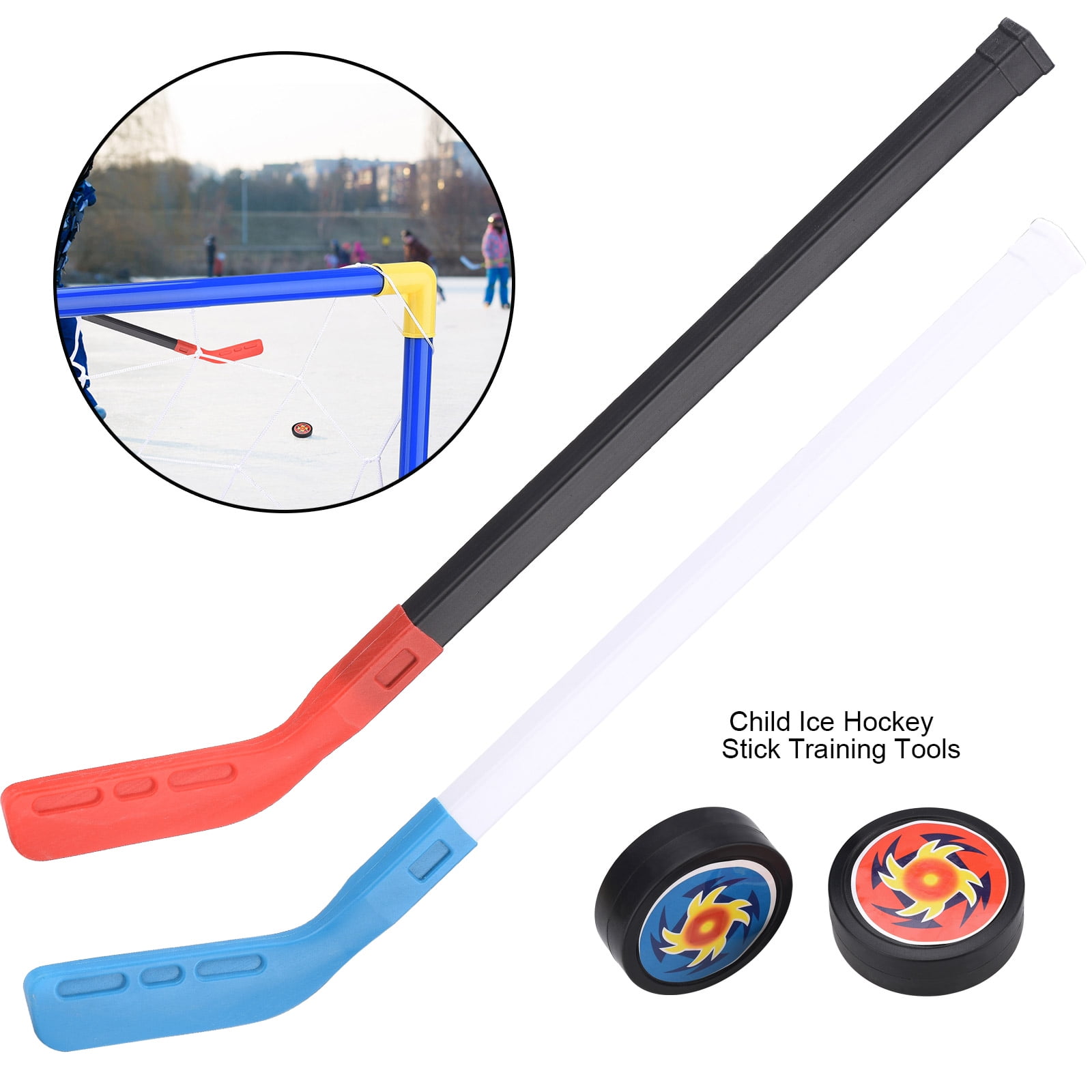
- The cage size may differ from the helmet size
- Ensure clear forward vision with eyes aligned between the bars
- Center your chin in the chin cup with no more than 1/2 inch of space
Why is proper cage alignment important? Correct cage positioning ensures optimal visibility and protection during play, reducing the risk of facial injuries and allowing players to focus on the game.
Fitting Shoulder Pads for Maximum Protection and Mobility
Shoulder pads are essential for upper body protection in hockey. Follow these guidelines to achieve the right fit:
- Center your shoulders within the shoulder cups
- Allow a small gap between shoulder pads and pants when standing upright
- Consider your playing style and level when choosing pad protection level
How do you balance protection and mobility in shoulder pads? The key is finding a model that offers adequate protection for your playing level while allowing enough flexibility for your natural movements on the ice. More protective models may feel slightly more restrictive, so consider your priorities when making a selection.

Elbow Pad Fitting Essentials
Properly fitted elbow pads provide crucial protection without impeding movement. Keep these points in mind when fitting elbow pads:
- Try them on with shoulder pads and gloves to ensure proper coverage
- Adjust straps for a secure fit that prevents shifting during play
- Ensure the pads stay in place if you fall
How tight should elbow pad straps be? Straps should be tight enough to keep the pads securely in place during active play, but not so tight that they restrict blood flow or cause discomfort.
Hockey Glove Fitting: Balancing Protection and Dexterity
Well-fitted hockey gloves are crucial for stick handling and hand protection. Consider these factors when selecting gloves:
- Align the glove’s wrist cuff with your wrist
- Fingertips should barely touch the end of the glove without forcing
- Ensure comfort and flexibility when moving your fingers
- Try different models to find your preferred fit (loose vs. anatomical)
How can you test glove comfort? Grab a hockey stick while wearing the gloves to simulate gameplay conditions. This will help you assess whether the gloves allow for natural movement and grip on the stick.
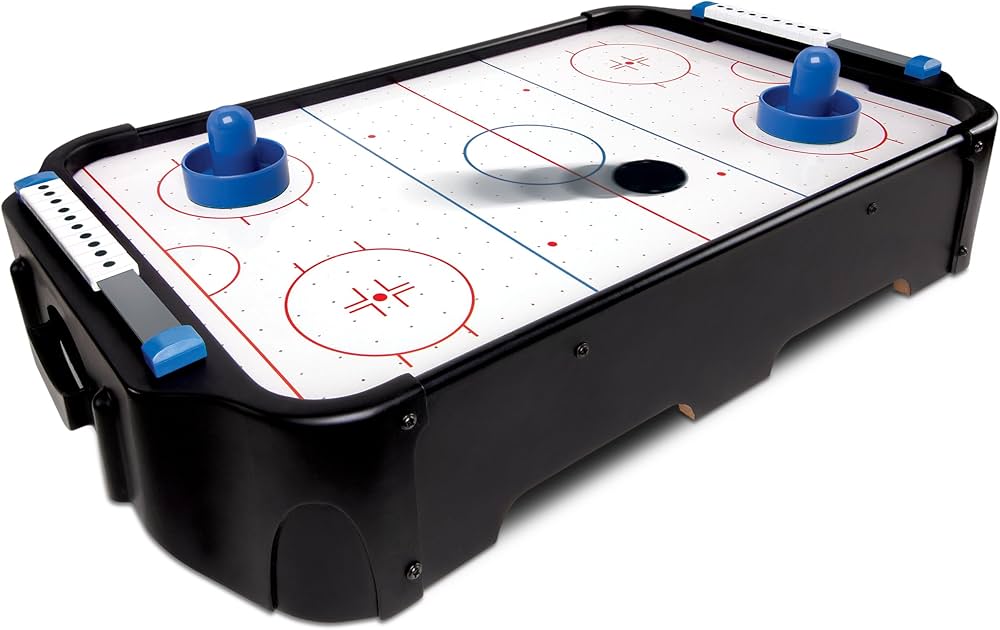
Achieving the Perfect Fit for Hockey Pants
Hockey pants provide essential protection for the lower torso and upper legs. Follow these guidelines for proper fitting:
- The bottom of the pants should reach the kneecap or slightly above
- Try them on with shoulder pads to check for proper coverage
- Ensure minimal or no gap between pants and shoulder pads when standing
- Allow for slight overlap to accommodate forward-leaning skating position
Why is the relationship between shoulder pads and pants important? Proper alignment between these two pieces of equipment ensures continuous protection for your torso, reducing the risk of injury to vulnerable areas during play.
Shin Guard Fitting: Protecting Your Lower Legs
Shin guards are crucial for protecting your lower legs from impacts and slashes. Consider these factors when fitting shin guards:
- Try them on with skates to determine the appropriate length
- Adjust length based on whether you wear skate tongues under or over the guards
- Center your kneecap within the knee pad
- Tighten straps to prevent shifting during play
- Ensure the guards stay in place when moving
How long should hockey shin guards be? Shin guards should provide maximum coverage without impeding skating motion. They should extend from just below the knee to the top of the skate boot, with the exact length depending on your preference for skate tongue placement.

Hockey Skate Fitting: The Foundation of Your Game
Properly fitted skates are essential for comfort, performance, and injury prevention. Follow these guidelines when selecting hockey skates:
- Ensure your heel doesn’t move when walking in the skates
- Your toes should barely touch the end of the skate
- Minimize empty space within the skate to optimize energy transfer
- Consider different widths (D for narrow/regular, EE for wider feet)
- Try various models and brands to find the best fit for your foot shape
How tight should hockey skates be? Hockey skates should fit snugly without causing pain or discomfort. A proper fit will feel tight initially but should become more comfortable as the skates break in. Avoid leaving excess space, as this can lead to reduced performance and potential blisters.
Lacing Techniques for Different Skill Levels
The way you lace your skates can affect both comfort and performance. Consider these lacing tips based on your skill level:
- New skaters: Lace skates all the way to the top for maximum ankle support
- Advanced players: Leave the top eyelet or two unlaced for increased ankle mobility
How does lacing affect skating performance? Proper lacing ensures a secure fit while allowing appropriate flexibility. Beginners benefit from full lacing for stability, while experienced players often prefer some ankle freedom for more dynamic movements.

The Importance of Professional Fitting and Expert Advice
While this guide provides valuable information on hockey equipment fitting, nothing can replace the expertise of trained professionals. Consider the following benefits of seeking expert assistance:
- Access to a wider range of sizes and models
- Personalized advice based on your playing style and body type
- Opportunity to try on multiple options for comparison
- Expert knowledge of brand-specific fitting nuances
Where can you find professional hockey equipment fitting services? Many local hockey shops offer fitting services with knowledgeable staff. Additionally, some sporting goods stores and pro shops at ice rinks may provide expert fitting assistance.
The Role of Online Resources in Equipment Selection
While in-person fittings are ideal, online resources can be valuable for research and preparation. Consider these online tools:
- Manufacturer sizing charts and guides
- Video tutorials on equipment fitting
- Customer reviews and feedback on specific products
- Online fitting consultations (offered by some retailers)
How can you make the most of online resources when selecting hockey equipment? Use online tools to familiarize yourself with different brands, models, and sizing conventions before making a purchase. This knowledge can help you make more informed decisions, whether shopping online or in-store.

Maintaining and Adjusting Your Hockey Equipment Over Time
Proper equipment care and regular adjustments are crucial for maintaining optimal fit and protection. Consider these maintenance tips:
- Regularly inspect gear for signs of wear or damage
- Clean and dry equipment after each use to prevent odor and degradation
- Periodically check and tighten screws, straps, and other adjustable components
- Replace worn-out or outgrown equipment promptly
How often should you reassess your hockey equipment fit? It’s advisable to check your equipment fit at the beginning of each season and periodically throughout the year, especially for growing players or if you notice any changes in comfort or performance.
Adapting Equipment for Changing Needs
As players develop and their playing styles evolve, equipment needs may change. Consider these factors when reassessing your gear:
- Changes in playing position or style
- Improvements in skill level
- Physical growth or changes in body composition
- Personal preferences for protection vs. mobility
How can players balance protection and mobility as they advance? As skills improve, some players may opt for equipment that offers greater mobility at the expense of some protection. However, it’s crucial to maintain adequate protection for your level of play and personal risk tolerance.

Understanding the Impact of Proper Equipment Fit on Performance
The fit of your hockey equipment can significantly influence your on-ice performance. Consider these performance factors affected by equipment fit:
- Skating speed and agility
- Shooting accuracy and power
- Puck handling dexterity
- Overall comfort and endurance
- Confidence in physical play
How does properly fitted equipment enhance player performance? Well-fitted gear allows for natural movement, optimizes energy transfer, and provides confidence in protection, enabling players to focus on their skills and gameplay rather than equipment concerns.
The Psychological Aspect of Equipment Fit
The psychological impact of well-fitted equipment should not be underestimated. Consider these mental factors:
- Increased confidence in physical play
- Reduced distractions from ill-fitting gear
- Enhanced focus on game strategy and execution
- Improved overall comfort leading to better endurance
How does equipment comfort affect a player’s mental game? When players feel comfortable and well-protected in their gear, they can focus more fully on the game, potentially leading to improved performance and enjoyment on the ice.

Adapting Equipment Fit for Different Hockey Disciplines
Different hockey disciplines may require slight variations in equipment fit. Consider these adaptations for various forms of hockey:
- Ice Hockey: Standard fit as described in previous sections
- Roller Hockey: May require more ventilation and lighter-weight gear
- Field Hockey: Typically involves less protective equipment and different stick designs
- Sledge Hockey: Specialized equipment designed for seated play
How do equipment needs differ between ice hockey and roller hockey? While many principles of fit remain the same, roller hockey often prioritizes increased ventilation and lighter-weight gear due to the typically warmer playing conditions and different surface characteristics.
Considering Climate and Playing Conditions
The environment in which you play can influence equipment choices and fit. Consider these factors:
- Indoor vs. outdoor rinks
- Climate-controlled vs. open-air facilities
- Geographical location and typical temperatures
- Frequency and duration of play
How can players adapt their equipment for different playing conditions? In warmer environments or for players who tend to overheat, choosing gear with enhanced ventilation or moisture-wicking properties can improve comfort. Conversely, players in colder settings may prioritize insulation in certain areas.
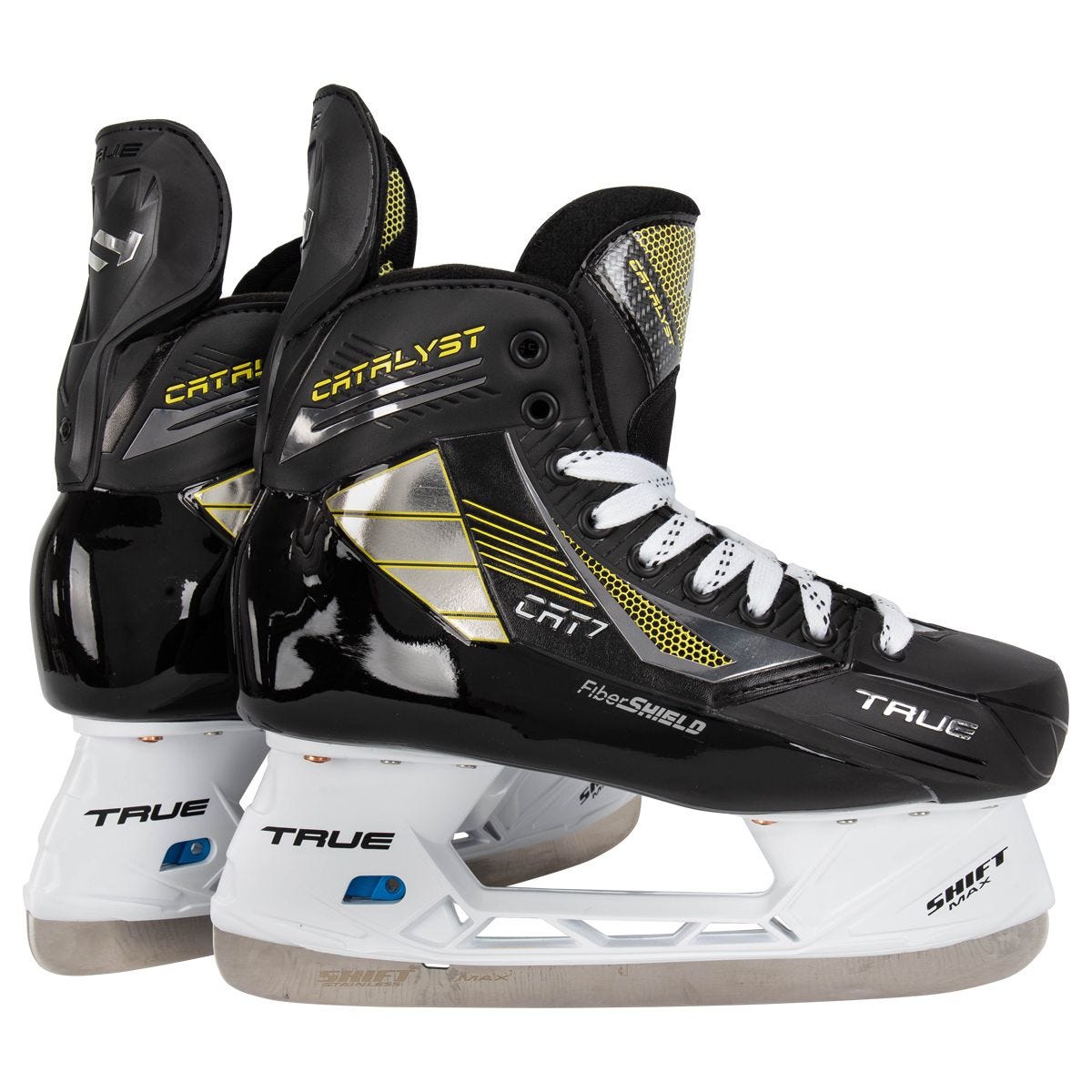
Crash Course for fitting Hockey Equipment
If you’re looking to start playing hockey you will need to get proper fitting hockey equipment. This can be a confusing process if you’ve never played before. We recommend going to a good local hockey shop with knowledgeable staff to answer your questions and help you find the right fit, but that isn’t always an option, and some people like to do a little research first.
I’ve teamed up with Hockey Supremacy to create a hockey equipment fitting cheat sheet filled with quick tips to achieve proper fit on all pieces of hockey equipment.
It’s important to choose the right piece of equipment that fits you. Not only will you be better protected, but a proper fit should give you the mobility you need on the ice to play your game without any restriction.
Here is our crash course on equipment fitting from head to toe.
Helmet
Look for adjustments on the sides of the helmet. Make sure you choose a helmet size that is closer to your head circumference before starting to adjust it for more comfort.
For a detailed guide visit our hockey helmet fitting guide
Helmet Cage
- It may not be the same size as the helmet.
- Your vision must be clear when you look forward (eyes aligned in-between the bars).
- Your chin must be centered with the chin cup, with a maximum of ½ inch space in between.
Shoulder Pads
- The tip of your shoulders must be centered with the shoulder cups.
- Make sure to keep a little bit of room between your shoulder pads and pants at the front when you are standing.
Once on the ice you will be slightly bent forward. The right spacing will prevent you from feeling limited in your movement while keeping you protected when in your regular hockey position.
The level of protection will vary as well depending of your priority or level of play. Some models offer more protection; however, they can feel a little bit more restrictive. This is really a personal choice.
Elbow Pads
Try them with your shoulder pads on and gloves to choose a model that doesn’t restrict you from moving with as little space as possible in between.
- Tighten the straps and make sure they are the right length, so the velcro stays tied under your jersey when playing.
- They should be tightened enough to stay in place if you fall.
Gloves
- The glove wrist cuff should be aligned with your wrist.
- Your finger tips should barely touch the end without having you to force against the material in between the fingers. It should stay comfortable when moving your fingers.
Some models or brands feel more loose, and others have more of an anatomical feeling. It’s really a personal choice. Grab a hockey stick and see what feels comfortable for you.
We go into more detail on our Hockey Glove fitting guide
Pants
- The bottom of the pants should arrive on the kneecap or just a little bit higher.
- Try them with your shoulder pads on. There should not be any space, or very little space in between them at the back when standing. It’s okay if they overlap a little bit, as you will be bent forward when you skate.

For more help visit our detailed hockey pants fitting guide
Shin Guards
Try them with your skates to have a better idea of the length you need. The length may vary depending if you play with your skate’s tongues under your shin guards or outside. You want to be protected as much as possible.
- Once your kneecap is in place, tighten the straps and make sure they are the right length, so the velcro stays firmly tied under your hockey socks.
- Your kneecap must stay centered at all time, make sure it’s tightened enough to stay in place during the game.
- Shin guards that are too long are more likely to move and feel uncomfortable when skating.
Need more help? Visit our shin pad fitting guide
Skates
- Your heel should not move when walking with the skates.
- Your toes should barely touch the end.
- You may want to lace them all the way to the top if you are a new skater.
 However, advanced players will prefer more mobility on the ankle.
However, advanced players will prefer more mobility on the ankle. - There should be as minimal space as possible in the skate to avoid wasting energy.
- Most skate sizes are offered in 2 different widths: D is narrow or regular, EE is wider. Other widths are available but harder to find
Depending on your feet size and width, you will want to try different model and brands to see which one fits better and offer the best comfort for you.
Still have some questions? Visit our hockey skate fitting guide
Thanks to Team Supremacy for this helpful equipment guide
HockeySupremacy.com is the largest Canadian online hockey store. We pledge to offer the best prices and a first class service. With our free shipping and returns over $149 policy, our loyalty program, live support and price comparison widget, we claim to be Canada’s #1 online hockey equipment retailer. Our team of experts and passionate hockey players is at your service for any questions regarding how to choose the right equipment for you.
How to put it on, wash and how much it costs -> FAQ
Hockey Pads & Protective Gear: Everything you need to know
What is inlcuded in hockey padding? How much does it weight, how do you put it on properly and how do you care for your jersey and equipment? You can find out all this here.
What makes padding good?
The game on the ice is intense: fast breaks, hits against the boards, sharp blades and a lightning fast puck make hockey exciting yet dangerous. In order to keep the risk of injury low, well-fitting and solid padding is extremely important. When buying your equipment, try not to save money. Find high quality gear that protects and fits right.
In order to keep the risk of injury low, well-fitting and solid padding is extremely important. When buying your equipment, try not to save money. Find high quality gear that protects and fits right.
Good hockey equipment should
Ad
Shin guards or leg pads are essential to protect against bruises: the chest and shoulder area in particular must be well protected. Elbow, knee and shin guards are also essential.
The head is protected by a good fitting hockey helmet: The outer shell is made of hard plastic and withstands shocks. The foam inside the helmet protects the head of the player. The chinstrap can be adjusted so that the helmet fits snuggly and does not move. Additional ear protection is recommended.
The chinstrap can be adjusted so that the helmet fits snuggly and does not move. Additional ear protection is recommended.
The skates need to withstand enormous strain and fit well so that there are no injuries to the foot or ankle. The skate should fit tightly and the laces bound firmly so that the shoes fit snuggly.
Ice hockey players wear special skates that are ideal for fast-paced play on the ice.
Did you know? The blades of hockey skates are sharpened differently than, for example, the blades of ice skates. They are shorter than the skate itself and have a high curvature (so-called rocker), which means that the skates have a relatively small area of contact with the ice. This makes its wearer particularly nimble and able to quickly change direction – which is particularly relevant for forwards. Defenders usually use skates with longer rockers as defensemen so they are more stable and can glide quicker.
Hockey Equipment: What’s included?
In principle, the same components belong to the equipment of the goalie and players. If you are a goalie, you need some extra padding.
Equipment for players
Hockey players need to have the following equipment:
What’s included
Tip: When training off the ice, we recommend the Fitness Jersey in design of your hockey jersey.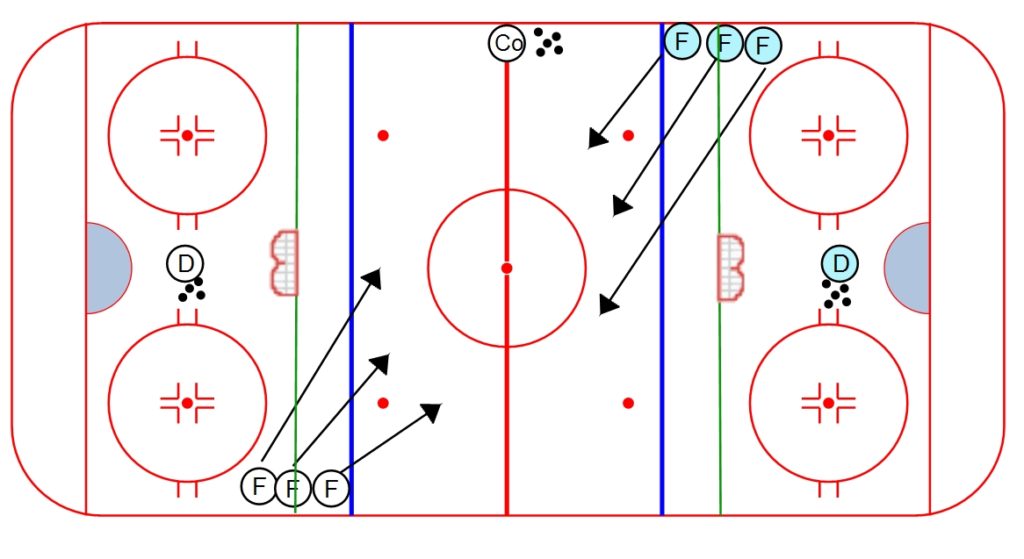
Design your own custom Hockey Performance Jersey in the owayo 3D Designer:
Necessary Equipment
By the way: We recommend using tape on your hockey socks so that your shin guards don’t slip while playing. Alternatively, go with Hockey Socks with velcro to secure the socks to your pants. Also tape your stick for added grip.
Special goalie equipment
Goalies need the same basic equipment as players. However, goalminders have extra equipment, such as
How are hockey jerseys sized?
How do you find the right jersey size? We recommend that you order Samples to try on from us.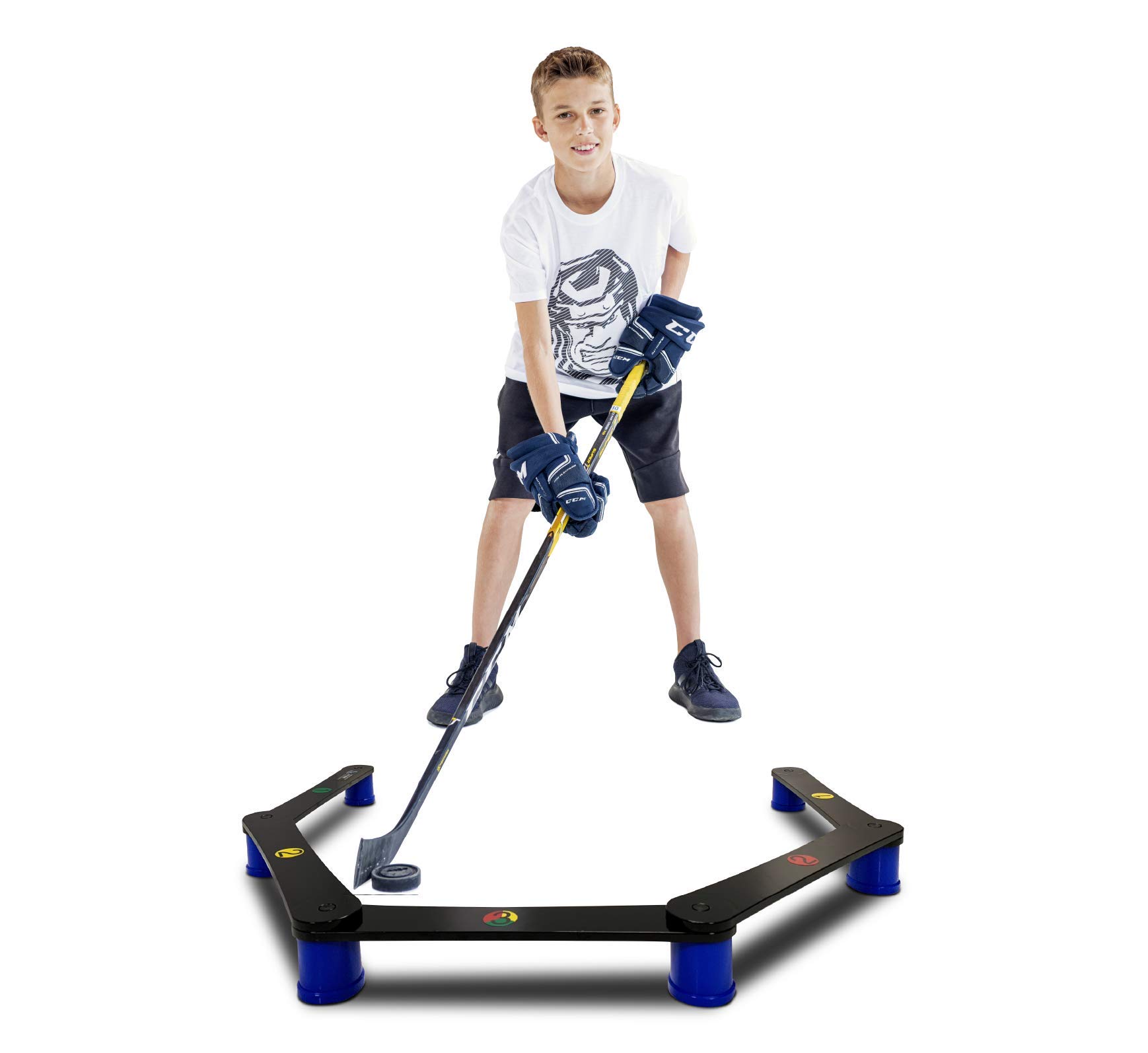 That way, you can find the size that fits best for you.
That way, you can find the size that fits best for you.
Alternatively, our size chart can help you find the right size based on your measurements. Just measure your chest circumference by measuring around the widest part of your chest.
Just compare your chest size with the information on our CENTIMETERS hockey size chart pdf or INCHES hockey size chart pdf.
By the way: With us you can order all jersey sizes as goalie sizes – the main difference is the sleeves. The sleeves on the goalie jersey are wider to accommodate the added gear. You can also choose the type of collar, whether soft, breathable or robust. Our jerseys also feature a mesh insert at the arm pits for added ventilation. »» Discover your design options now
How do you put on your hockey gear?
We’ve already mentioned that hockey players wear many kinds of padding.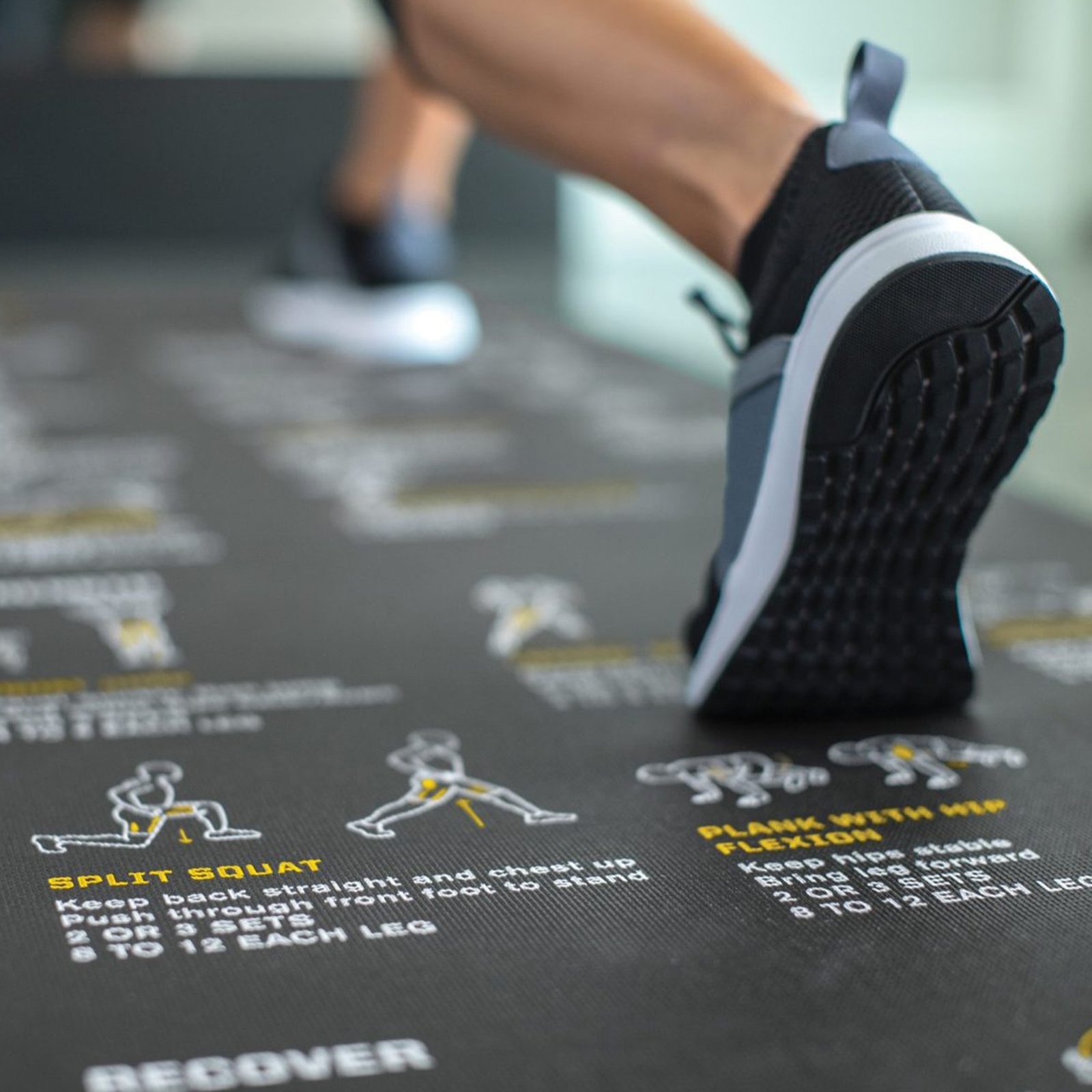 But how do you put on a jock strap, jersey, pant covers, chest pads, etc.?
But how do you put on a jock strap, jersey, pant covers, chest pads, etc.?
In the following video, Marcel from “Marcel’s Hockey School” shows you how to wear padding:
How much does hockey equipment cost?
How much your hockey gear costs depends on your experience. Depending if you are a beginner or professional, or want to buy hockey equipment for your child, the cost will depend on your situation.
Beginners: For beginners you should expect to pay about 200 Euros/Dollars – for the helmet, stick, gloves and skates.
Advanced/Professionals: If you are looking for higher tier gear, you can expect to spend between 500 and 1,000 Euros.
Ad
Children: If your child wants to play hockey, it is not absolutely necessary to buy expensive protective equipment immediately. Your local hockey club may offer introductory courses and provide the equipment. Or you can buy clothes from other hockey parents whose children have outgrown them.
Your local hockey club may offer introductory courses and provide the equipment. Or you can buy clothes from other hockey parents whose children have outgrown them.
Were you aware? Ice hockey sticks used to be made of wood, nowadays they are made of composite materials like carbon. They do not shatter as easily as wooden sticks, but wear is enormously high, especially in professional leagues: Pro Stock Hockey states that “Blackhawks equipment manager Troy Parchman said in 2015 that his team typically breaks at least two to three sticks per game”.
Hockey helmets usually come with a metal mask to protect the face.
How heavy is hockey equipment?
Ice hockey players generally carry a lot of equipment, and that means a lot of weight. The equipment for field players weighs around eight kilograms. Goalies can have have up to 20 kilograms of padding:
Goalies can have have up to 20 kilograms of padding:
As a goalie you sweat a lot – also thanks to 20 kilograms of added weight in equipment.
How to wash and store hockey equipment
Pooh, that stinks! So that the equipment doesn’t smell too bad, you should hang it up immediately after playing to dry. If the used clothing stays in the hockey bag until the next practice, bacteria could start growing. This means: Your hockey gear can get moldy if you don’t air it out.
Instead of hanging up your equipment after training, you can also store it after drying in airtight plastic boxes to prevent unpleasant odours.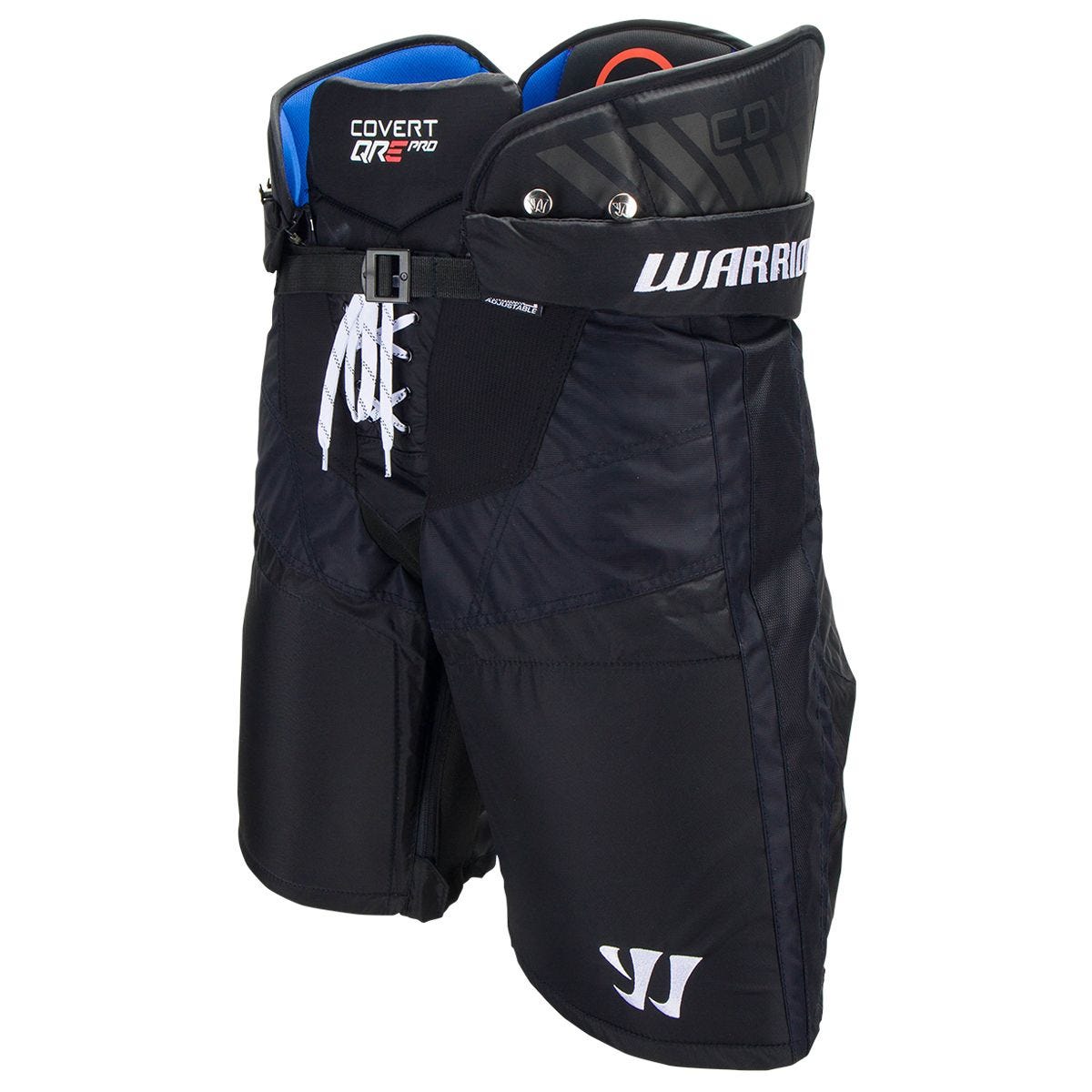
Tip: Antibacterial sprays can help to reduce odour.
Wash your functional clothing you wear under your gear. Read in our magazine how to wash and care for your sportswear properly.
The following video will show you how to wash the different parts of your hockey gear properly:
Individual hockey sportswear for your team
Ice hockey jerseys not only protect the players, they provide a unifying effect for the team. Create a unique hockey jersey that will make your team stand out.
Here are some examples design our customers have come up with:
Discover ice hockey products in the owayo shop and design your own custom hockey sportswear!
Or read more about ice hockey in our magazine:
Ad
Picture credits: © gettyimages/ronniechua; Picture 1, 3, 4: owayo; Picture 2: © gettyimages/Mikhail Rudenko; Picture 5: © gettyimages/francisblack; Picture 6: © gettyimages/Photodisc.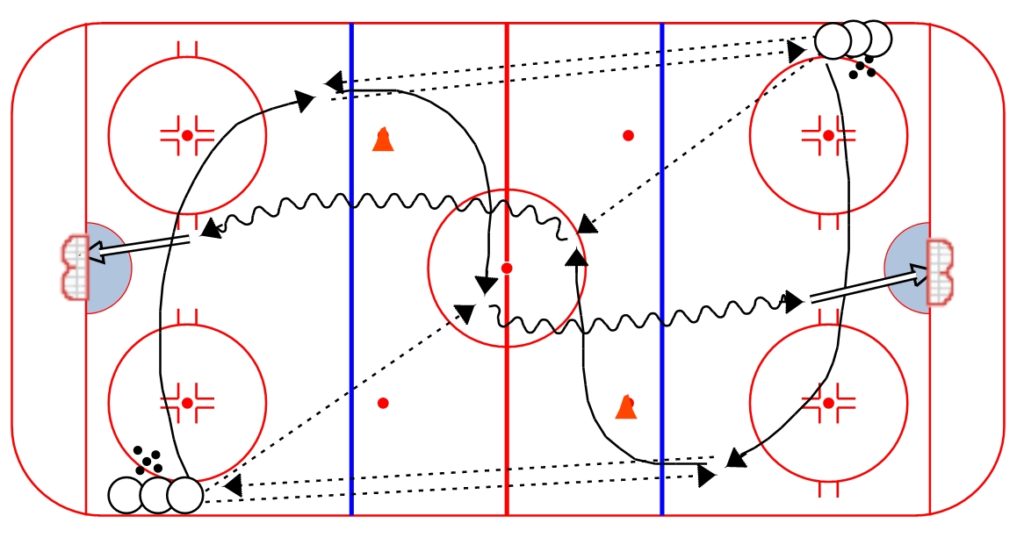
Guide To Hockey Protective Equipment
Before you take the ice, you’ve got to get the right gear. Use our recommendations to make sure you’ve got everything you need, from opening faceoff to the final whistle. Keep in mind this hockey protective equipment guide covers gear for every player except goaltenders. Take a look at our article on how to buy hockey goalie equipment for more.
HELMET & FACEMASK
Hockey helmets are required at all levels of hockey. Hockey helmets are typically available in a one- or two-piece design, with the two-piece design offering a more customized fit. Inside of each helmet is a liner that helps absorb impact while enhancing comfort—safety experts recommend padding that is at least 5/8 inches thick.
Unless you’re a pro, your helmet will need to have a face mask—they are required up through the collegiate level. There are three main types of masks:
- Wire cages consist of a metal or composite shield that covers the entire face area.
 Wire cages provide more protection and do not fog up like face shields.
Wire cages provide more protection and do not fog up like face shields. - Face shields feature impact-resistant plastic that covers the front of the face. Some players prefer face shields because they provide better overall vision.
- Combination masks offer the best of both styles, with a clear plastic shield to cover the upper part of the face and wire mesh to protect the lower jaw and add ventilation.
SHOULDER PADS
Hockey shoulder pads provide protection for the collarbone, upper chest, upper arms and, of course, shoulders. Choose the amount of padding you need based on your position and style of play:
- Forwards may prefer lighter-weight pads that offer more freedom of movement.
- Defensemen should look for larger pads that provide ample protection for shot blocking.
Pad sizing is available according to body type. To find your size, wrap a tape measure around your chest just below your armpits.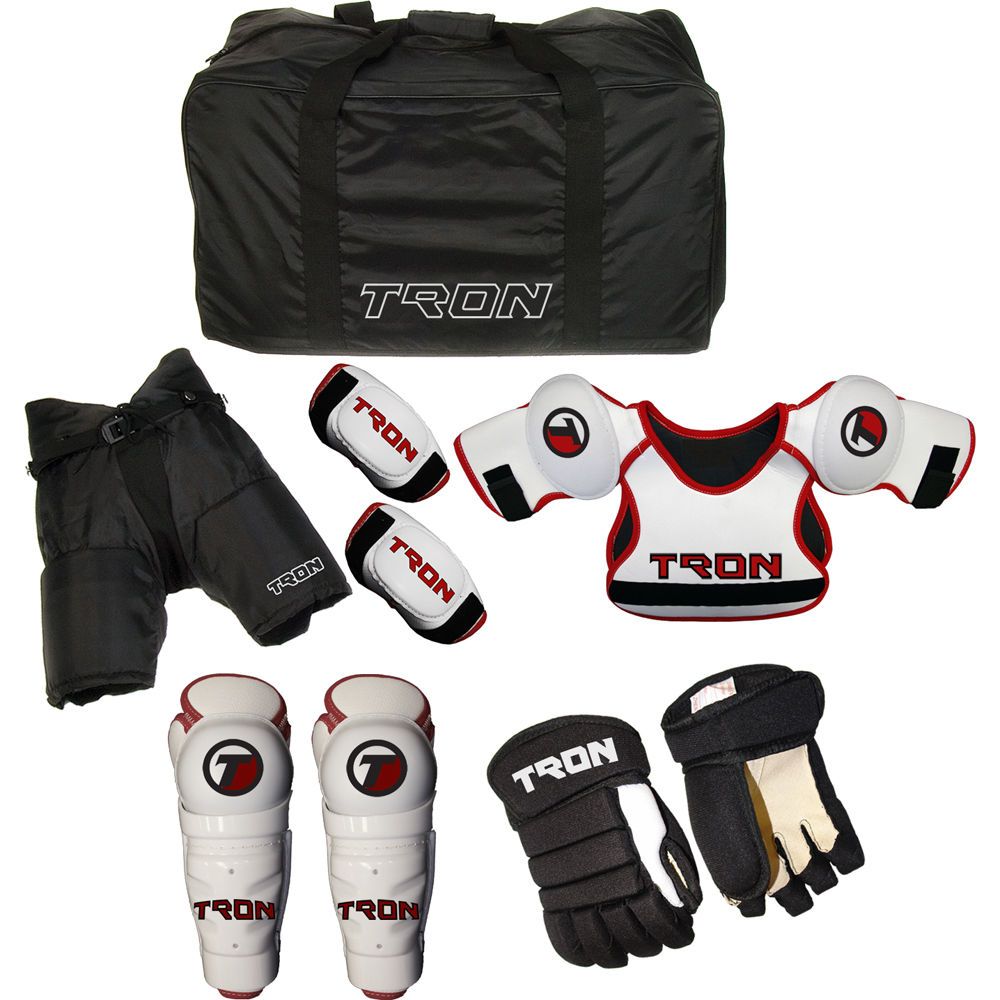 You can then use the following chart as a general guide to choose the size you need:
You can then use the following chart as a general guide to choose the size you need:
ELBOW PADS
Elbow pads cover the area from just below the shoulder pad to just above the hockey glove. They help protect against painful bone bruises, and even fractured elbows, from falls, or being hit by a stick. Most elbow pads are adjustable and are secured with Velcro straps, so sizing is general according to body size.
There are also varying numbers of straps available on different pads to help with adjustments.
To find your elbow pad size, determine the distance between the edge of your shoulder pads and the cuff of your hockey glove. The elbow pad should leave no exposed skin between the shoulder pad and the glove. The chart below is a good indicator of the elbow pad size you should buy based on the above measurement.
SHIN GUARDS
Forwards usually prefer lighter pads with less protection that allow them to skate faster, while defensemen should look for a heavier shin guard that helps protect against pucks and opponent’s sticks.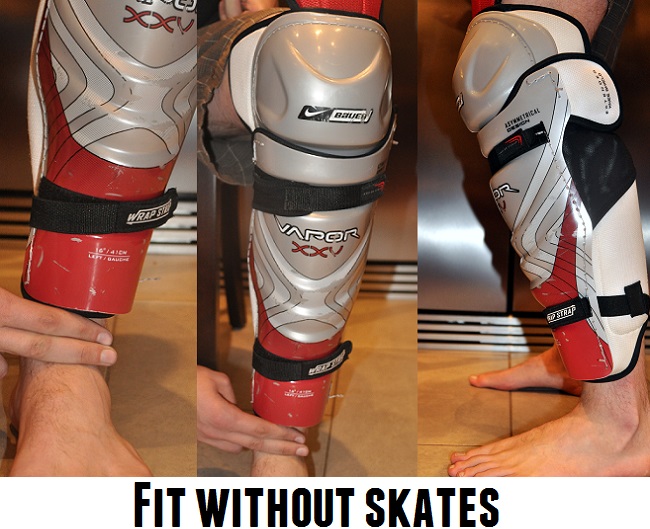
Shin guards range in size from 7 to 17 inches in length and are designed to fit over the kneecap to just above the skate top. You should look for shin guards sized to your height. While sitting down, measure from the middle of your kneecap to the top of your skate, and then use the chart below to find your size based on the above measurement.
GLOVES
Hockey gloves protect the hand and wrist, but help players maintain critical flexibility and comfort on the ice. Traditional gloves have all-leather construction, but modern versions incorporate Kevlar and nylon for better strength and durability. Gloves can be a little big, as long as the padding covers all areas of the hand and wrist.
Gloves range from youth sizes of about 9 inches up to full adult sizes of 16 inches. Use a tape measure to measure the distance from where your elbow pads end to the tip of your fingers. This number equals your glove size.
The chart below is a good indicator of the glove size you should buy based on the above measurement
MOUTHGUARDS
Mouthguards either come in a pre-formed mold or as “boil and bite” mouthguards, which can be boiled and modified to your unique dental imprint. Mouthguards come in general sizes to fit youths, teenagers and adults.
Mouthguards come in general sizes to fit youths, teenagers and adults.
Of course you’ll need skates as well. Be sure to find the right hockey skates for your game and find the right fit with our hockey skates buying guide.
Now that you have all the gear you need, you’re ready to suit up and take the ice for a great season. Good luck!
How to Properly Fit a Hockey Helmet
by Source For Sports Hockey
Wondering how to fit your hockey helmet properly? Here are some tips and advice from your hockey experts at Source For Sports who will ensure proper fit.
Helmets are one of the most important pieces of equipment in any sport and it’s essential that you protect your most valuable asset. No helmet can completely prevent concussions, but the first step in head safety is to find the helmet that best fits your head and level of play.
No two heads are the same, and all helmets fit differently. The helmet that’s right for you is the one that fits.
Bring your helmet into any Source For Sports Location for a free inspection and fit adjustment
Pro-Formance Advantage Custom Fitting system is a system designed to put you in the right helmet for your game, and considers many factors such as:
- What level of hockey do you play, and how often? Elite level players who play contact hockey require a helmet designed for that purpose. However, even if your child is just starting out in hockey, you need to ensure the head is well protected – after all, learning to play means there will be falling and tripping.
- How often do you get your hair cut? Thick hair and pony tails can give the impression that helmets are fitting smaller than they actually are; a skullcap is a good option for keeping hair out of the eyes, and close to the skull under the helmet.

- Never buy a helmet to “grow into”. A helmet must fit snugly, with one finger width above the eyebrow and ample coverage of the temples and ears. A helmet that shifts on the head does not absorb impacts.
- Are you looking for a helmet and cage combo? If so, the helmet and cage must work together as a unit on your head and face to provide proper protection. Helmets are fitted to head size, and masks are fitted to face size. It is not unusual for a player to have a different mask size on their helmet. The chin cup must be secure and the cage must align with the J clips on the helmet to minimize movement, thereby reducing shock traveling from the face to the skull.
- Are you ready for a visor? When mounting a visor, there should only be about 1.25 cm between your nose and visor. The closer to your face that the visor is, the less likely you are to be hit in the eye with a stick or puck.
Helmet Fitting Tips:
- The best helmet for you is the one that fits the best
- The helmet should fit snugly all around your head
- You should have one finger width between your eyebrows and the helmet
- The chin strap should be always be done up
- The chin cup should fit snugly and directly on your chin
- The helmet J Clips should be properly aligned with the facemask to hold it in place and absorb any impact the facemask may take
Bring your helmet into any Source For Sports Location for a free inspection and fit adjustment
youtube.com/embed/ibbbKoR2eSQ” frameborder=”0″/>
If It Doesn’t Fit, It Doesn’t Protect. Bring your or your child’s helmet into one of our Source For Sports hockey stores to have it inspected free of charge.
Source For Sports. We Know Our Stuff.
Full Hockey Equipment
Helmet
The helmet is the most important piece of safety equipment; its proper fit is serious business. Make sure it is comfortable and fits snug just above the eyebrows while making contact with the top of the player’s head.
When purchasing a hockey helmet have the player try on different brands for fit and comfort. First, measure the circumference of the player’s head about one inch above the eyebrows. Next, consult the size chart of the brand that is being considered. Each manufacturer has a chart that matches helmet sizes with head measurements. Hockey equipment retailers should have these charts available for reference; they are also available on the websites of the manufacturers.
When trying the helmet on open it to its largest setting then gradually downsize it until a comfortably snug fit is achieved. Tighten and secure the helmet adjustment then securely fasten the chin strap so it gently makes contact under the chin. A helmet that fits properly should fit snugly without causing headaches or discomfort, but should not be oversized. A helmet that is too big can lead to unnecessary injuries because the protection built into it by the manufacturer will not work properly. Never paint or add stickers to the shell of a helmet as this weakens the structure.
Regularly inspect the helmet inside and out for cracks or signs of deterioration replacing it immediately if any are found. Replace loose or missing screws as needed. A decent helmet should last for about five or six years.
Mouth Guard
Mouth Guards are also important to protect your head. They not only protect your teeth but shield you from a concussion.
Neck Guard
This is a required piece of equipment for Rockets players. The neck guard can help prevent potential cuts to the neck when players collide and fall to the ice.
The neck guard can help prevent potential cuts to the neck when players collide and fall to the ice.
Shoulder Pads
Shoulder pads provide stability and protection for the shoulder blades and the muscles of the shoulders. Shoulder pads can also offer some chest protection which can be useful if you play defense and block shots.
For proper fit measure the player’s chest just below the armpits. Refer to the manufacturer’s sizing chart to determine the corresponding shoulder pad size. The center of the player’s shoulder should line up directly with the center of the shoulder caps. Good hockey shoulder pad fit should provide protection for the chest, ribs, back, collar bone, and upper arms. A player should have good range of motion while wearing shoulder pads. To test range of motion, lift arms above shoulder height to ensure the pads do not dig into the neck.
Elbow Pads
Elbows, once injured, are prone to infection, difficult to heal and prone to re-injury. It is easy to see why a good pair of ELBOW PADS is such an essential part of the protective equipment package.
It is easy to see why a good pair of ELBOW PADS is such an essential part of the protective equipment package.
When properly fitted the top of the elbow pad should meet the bottom of the arm of the shoulder pad and extend down the forearm to the top of the glove. The elbow pad should not restrict the movement of the elbow. With the elbow pads on, test the range of motion by bending the arm at the elbow, watching for restriction.
Hockey Gloves
Bigger is better than smaller for HOCKEY GLOVES. Gloves not only provide protection from sticks, boards or pucks but they are helpful in absorbing the shock of your stick when you shoot a slap shot. Small fitting gloves look silly and provide less protection to the forearms. One of the safety features of hockey gloves is the thumb protection which is an area that is armored and fixed in a position which helps protect it from sprains and breakage. Most hockey gloves are essentially the same in construction and function, the only significant difference being the length of the cuff which extends from the wrist. Forwards sometimes prefer a shorter cuff which gives them greater flexibility in wrist movement. Defensive players prefer a longer cuff which provides maximum protection.
Forwards sometimes prefer a shorter cuff which gives them greater flexibility in wrist movement. Defensive players prefer a longer cuff which provides maximum protection.
Hockey gloves should generally fit like loose winter gloves over the fingers. The top of the glove needs to extend up to the forearm to the bottom of the elbow pads (except short cuff fit). The main consideration with the fit of a hockey glove is that the gap between the glove and the elbow pad is minimal. The glove should offer freedom of movement in all positions without chafing or restricting movement. Measure the distance between the fingertips and the elbow pad to determine the hockey glove size.
Hockey Pants
Hockey Pants are important to the protection of the groin, thighs, waist and buttocks and, surprisingly, the tailbone. There is nothing more painful than a bent or broken tailbone. This injury can easily occur through contact with the ice, boards, or a goal post. A good quality pair of hockey pants with adequate padding in all of these areas is critical.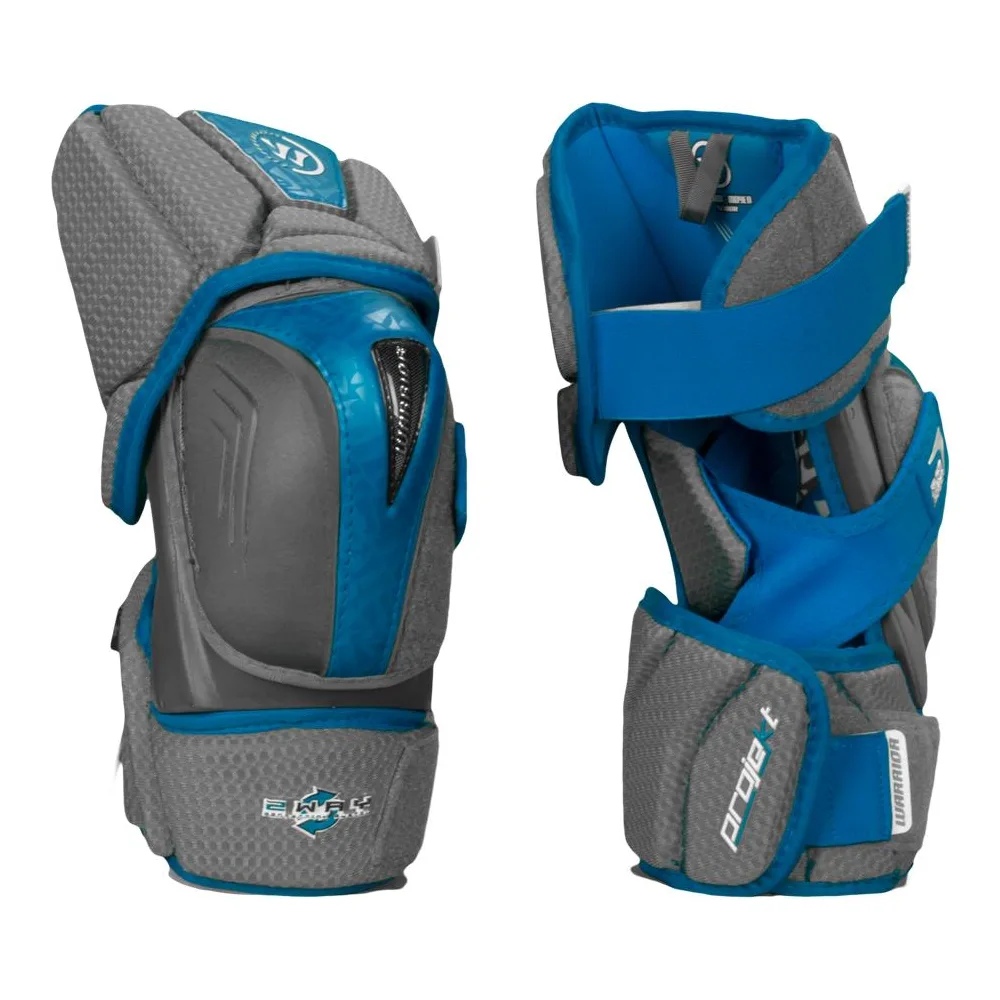 A good quality pair of hockey pants should last for years.
A good quality pair of hockey pants should last for years.
Groin Protection
An ATHLETIC SUPPORTER AND CUP are essential for male players. A special, larger protector is made for goalies. A pelvic protector is available for female players.
Garter Belt or Velcro Jock
The GARTER BELT is used to keep up the hockey socks. They work well. Some players prefer a newer style compression jock that has Velcro tabs on the legs for holding up hockey socks.
Shin Pads
SHIN PADS are another critical piece of safety equipment. Don’t skimp here. A heavy and sturdy shin pad with high quality interior padding is the best choice. A slap shot to the knee or shin, even if it does not cause the pad to physically contact the leg, has a tremendous shock impact. Huge and painful bruises from front full impact slap shots are not unusual. Again, the proper size equipment is crucial. If the shin pads are too long they will hinder ankle flexibility and skating.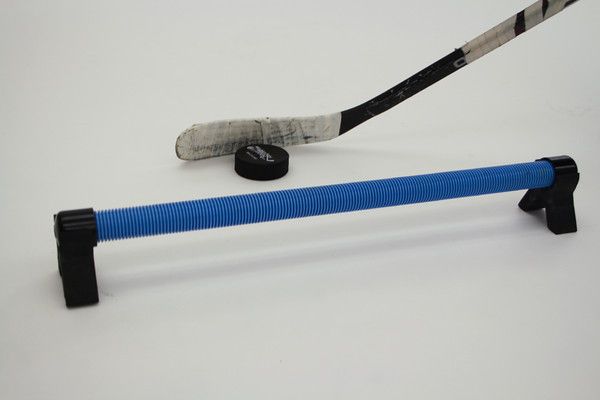 A shin pad that is too short provides inadequate protection.
A shin pad that is too short provides inadequate protection.
When fitting, ensure that the cap of the shin pad is centered on the knee cap. The calf padding should wrap around the lower leg. Measure from the center of the knee cap to the top of the skate boot; match the player’s shin size to the inches of the shin guard.
Skates
Sewn ice hockey SKATES generally fit 1 to 1-½ sizes down from the player’s regular shoe size. When fitting children allow ½ size extra for growth. ½ size is equivalent to one finger between heel and back of skate. Anything over the recommended ½ size could result in premature breakdown of the skate.
While sitting down, and wearing the socks that will be worn while skating, the skater should put the skates on and kick his heel back into the skate. The toes should barely touch the toe cap. While lacing the boot up, the heel should be continuously kicked back to ensure a tight fit. When finished lacing, the skater should get up and walk around for 10-15 minutes in order to get the proper fit and feel of the hockey skates. The foot should feel comfortable with the rear snug and resting on the footbed. The toes should be extended flat and be able to just feather the toe cap.
The foot should feel comfortable with the rear snug and resting on the footbed. The toes should be extended flat and be able to just feather the toe cap.
Hockey Sticks
To determine proper HOCKEY STICK length the player should stand in stocking feet and place the toe of the stick on a level surface between his feet. A general rule of thumb is to mark and cut the handle of the stick where it touches the tip of the player’s nose. When standing with skates on, the stick should come up to the player’s chin or just below it.
Jersey
Proper size is important. If the JERSEY is too small, it may be too confining and uncomfortable. If the jersey is too large, it gives defensive players some thing they can easily grab out of the referee’s view.
Size chart for all ice hockey products from Bauer ice skates to ice hockey shoulder protection. We o
Size chart for all ice hockey products from Bauer ice skates to ice hockey shoulder protection.
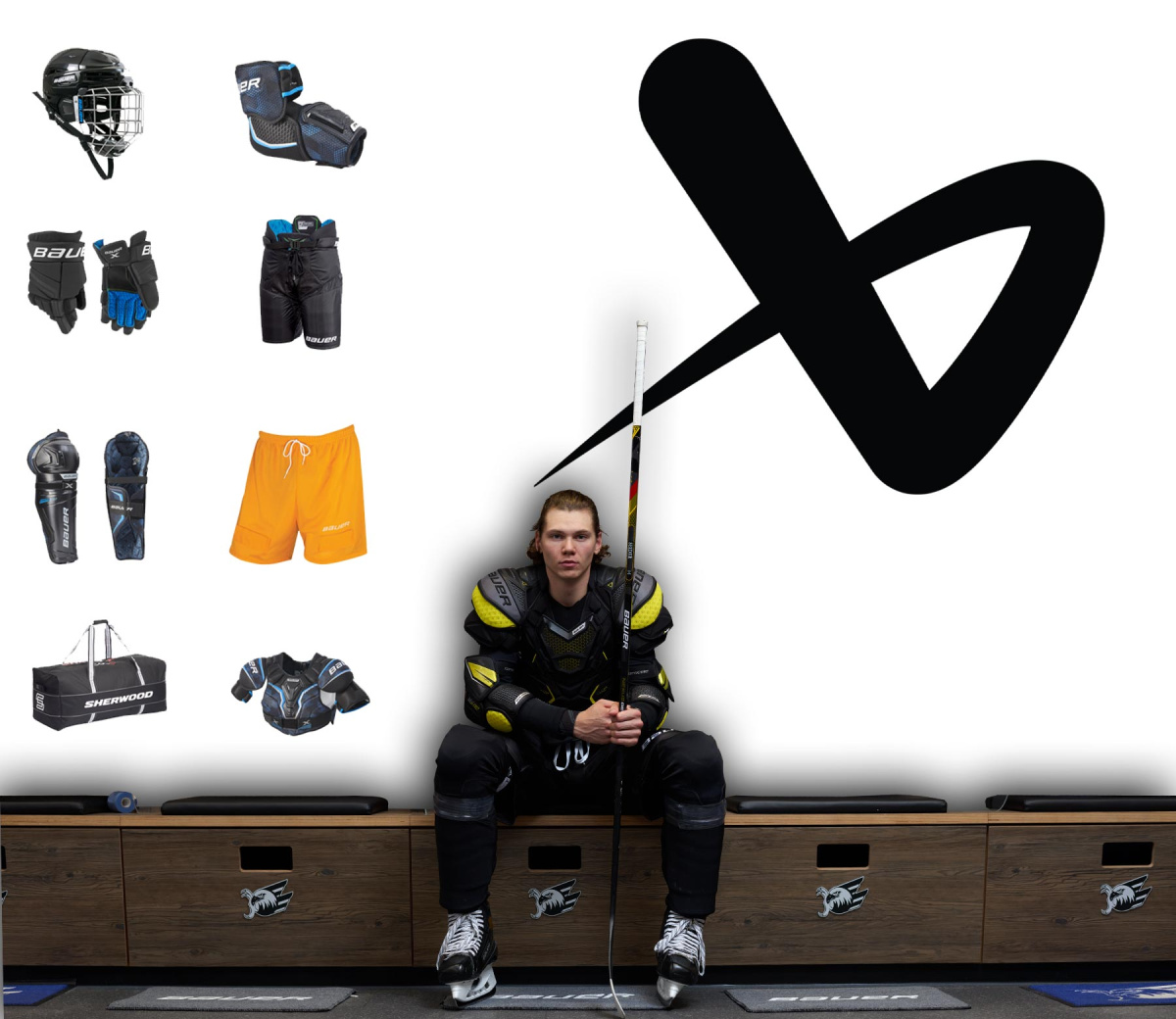 We offer exactly the right size information for your hockey equipment.
We offer exactly the right size information for your hockey equipment.
Bestseller
The bestseller symbol for a product shows you that it is a bestseller, that is, a product that we sell very often in the price class. We will test the products in detail and evaluate them with our team in order to give you the best possible recommendations in hockey equipment. Who would like to order a hockey complete equipment, should best put together his products. If your selected ice hockey equipment also has an additional icon “our tip” or “pro-tip”, you make everything right.
Icehockey Fitting Table
Help: Icehockey size and pattern information for Eishockey Equipment
Shoulder and chest pads
Please measure the chest circumference with a tape measure (see picture). Enter the value into the form field and it will gives out the right size. Alternatively, you can match the value with the table. Please note your body height for the chest and shoulder pads. Youth and Bambini are the same.
Youth and Bambini are the same.
| Chest circumference | Height | Size | |
|---|---|---|---|
| 53-64 cm | 90-100 cm | → | Bambini XS |
| 56-66 cm | 100-120 cm | → | Bambini S |
| 58-69 cm | 105-120 cm | → | Bambini M |
| 61-71 cm | 120-134 cm | → | Bambini L |
| 66-76 cm | 120-142 cm | → | Junior S |
| 71-81 cm | 134-147 cm | → | Junior M |
| 76-86 cm | 147-160 cm | → | Junior L |
| 91-102 cm | 152-165 cm | → | Senior S |
| 97-107 cm | 165-178 cm | → | Senior M |
| 102-112 cm | 173-183 cm | → | Senior L |
| 107-117 cm | 178 cm and up | → | Senior XL |
| 112 cm and up | 185 cm and up | → | Senior XXL |
Elbow pads
To measure correctly, put the tape measure at the center of your upper arm. Then measure to the middle of the forearm. Make sure that the arm is bent and you measure below the arm (as shown in the picture at all). Depending on the muscle mass can be varied between the different sizes.
Then measure to the middle of the forearm. Make sure that the arm is bent and you measure below the arm (as shown in the picture at all). Depending on the muscle mass can be varied between the different sizes.
| Elbow length | Size | |
|---|---|---|
| 18-20 cm | → | Bambini S |
| 19-22 cm | → | Bambini M |
| 20-23 cm | → | Bambini L |
| 23-28 cm | → | Junior S |
| 25-30 cm | → | Junior M |
| 26-31 cm | → | Junior L |
| 27-32 cm | → | Junior XL |
| 30-33 cm | → | Senior S |
| 33-36 cm | → | Senior M |
| 36-38 cm | → | Senior L |
| 37-39 cm | → | Senior XL |
Gloves
Depending on their size, you need a special size for gloves. Enter your height in centimeters in the form below and get your size.
Enter your height in centimeters in the form below and get your size.
| Height | Size | |
|---|---|---|
| up to 110 cm | → | 9″ |
| 110-120 cm | → | 10″ |
| 120-130 cm | → | 11″ |
| 130-140 cm | → | 12″ |
| 140-160 cm | → | 13″ |
| 160-185 cm | → | 14″ |
| 185 cm and up | → | 15″ |
Helmets
Simply use a tape measure to measure your head size and enter the value in the form field in cm. It will then automatically output the correct size. Feel free to match the number again with the table. Hockey helmets are size-adjustable and can be used for many years. Please read the operating instructions and make the helmet bigger, put it on and adjust the necessary size. The helmets are all adjustable in size, the range is therefore the likely size clear indication of the helmet. For shorter chin, as for children, we recommend the Bauer 2100 helmet junior. Among the manufacturers can easily vary the size to be then it stands accordingly.
For shorter chin, as for children, we recommend the Bauer 2100 helmet junior. Among the manufacturers can easily vary the size to be then it stands accordingly.
| Head size | Height | Size | |
|---|---|---|---|
| 52-54,9 cm | up to 120 cm | → | S |
| 55-58 cm | 120-134 cm | → | M |
| 58-63 cm | 134-147 cm | → | L |
| 59-64 cm | 147-160 cm | → | XL |
Note for Junior: We also carry junior helmets that are in the face area slightly smaller and guarantee a perfect fit for the younger players. For many players fit with long chin or normal but the normal Senior sizes.
Pants
The pants sizes depend on the hips. Anyone who always needs something bigger pants at street wear should also resort to a higher size. In terms of brands, the customs (“) sizes may vary slightly.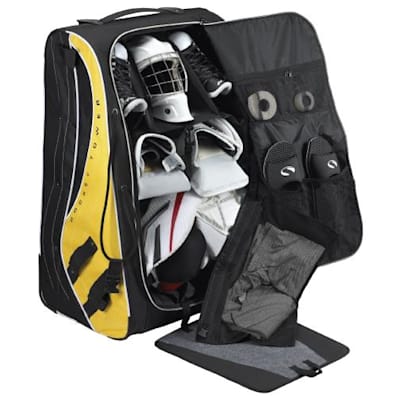 This is then recorded in the respective pants.
This is then recorded in the respective pants.
If you already know how much inches is to your hips, you can type the words on the form and you will get your size. Do not know your hip? No problem. Simply use a tape measure to measure the point marked on the form and enter the cm. You will then be automatically issued your size.
Attention: Decimal place please with a “.” (Dot). Example: 25.5
In case of an “or-result” please look again at the chart below and match you size with additional values.
| Hip inch | Height | Size | |
|---|---|---|---|
| 20-22″ | up to 99 cm | → | Bambini S |
| 21-23″ | 100-109 cm | → | Bambini M |
| 21-23″ | 110-119 cm | → | Bambini L |
| 22-24″ | 120-130 cm | → | Junior S |
| 24-26″ | 130-140 cm | → | Junior M |
| 26-28″ | 140-150 cm | → | Junior L |
| 28-30″ | 150-160 cm | → | Junior XL |
| 30-34″ | 150-160 cm | → | Senior S |
| 32-36″ | 160-170 cm | → | Senior M |
| 34-38″ | 170-180 cm | → | Senior L |
| 36-40″ | 180-190 cm | → | Senior XL |
| 40+” | 190 cm and up | → | Senior XXL |
Shin pads
Please measure your shin length while attach the tape measure at the center of the knee and stop there, where does the upper part of the skate ends. If you have no skate at the moment, stop measuring above the ankle. Enter the value in the form below and you’ll be issued a suitable size. Alternatively, you can also look to the table. Please also note your height.
If you have no skate at the moment, stop measuring above the ankle. Enter the value in the form below and you’ll be issued a suitable size. Alternatively, you can also look to the table. Please also note your height.
Attention: Decimal place please with a “.” (Dot). Example: 25.5
In case of an “or-result” please look again at the chart below and match you size with additional values.
| Shin length | Height | Size | |
|---|---|---|---|
| 20-22,9 cm | 100-110 cm | → | 8″ |
| 23-24,9 cm | 110-120 cm | → | 9″ |
| 25-27,9 cm | 120-130 cm | → | 10″ |
| 28-29,9 cm | 130-140 cm | → | 11″ |
| 30-32,9 cm | 140-150 cm | → | 12″ |
| 33-35,9 cm | 150-160 cm | → | 13″ |
| 36-37,9 cm | 160-170 cm | → | 14″ |
| 38-40,9 cm | 170-180 cm | → | 15″ |
| 41-43,9 cm | 180-190 cm | → | 16″ |
| 44 cm and up | 190 cm and up | → | 17″ |
Sticks and blades
Please notice the folloing to order the correct side:
Most of the players need left sided sticks and/or blades.
Please order left side, if your left hand is down when playing the puck.
Please order right side, if your right hand is down when playing the puck.
Choice of the most suitable stiffness of the shaft
This chart should help you to choose the correct stiffness for the best performance. The wrong stiffness of the shaft may have a negative influence to your personal performance. The strength of a player and the shortening of a stick or shaft may result in another correct stiffness for you.
| Age | Length | Weight | Flex | Sticklength (shaft & blade) |
|---|---|---|---|---|
| Tyke (3-5) | 88-116 | 11,5-23 KG | 30 Flex | 43″ |
| Youth (4-6) | 102-124 | 14-28 KG | 35 Flex | 47″ |
| Youth Tall / Youth Elite (5- | 119-136 | 16-34 KG | 35/40 Flex | 51″ |
| Junior (7-11) | 124-144 | 36-45 KG | 45/47 Flex | 55/57″ |
| Junior (10-13) | 132-154 | 41-50 KG | 50-52 Flex | 55/57″ |
| Intermediate (11-14) | 132-162 | 50-59 KG | 60 Flex | 62″ |
| Intermediate (12-15) | 136-168 | 54-64 KG | 67 Flex | 62″ |
| Intermediate (13-16) | 145-169 | 64-73 KG | 75 Flex | 62″ |
| Senior (14+) | 165-180 | 64-72 KG | 77 Flex | 65/69″ with 4″ extension |
| Senior (14+) | 167-185 | 73-86 KG | 87 Flex | 65/69″ with 4″ extension |
| Senior (14+) | 170-187 | 80-93 KG | 95 Flex | 65/69″ with 4″ extension |
| Senior (14+) | 175-190 | 86-100 KG | 102 Flex | 65/69″ with 4″ extension |
| Senior (14+) | 180+ | 95+ KG | 112 Flex | 65/69″ with 4″ extension |
Comparison of the Flex-Profile
This chart will help you to have the information which stick of the different brands have which Flex-Point.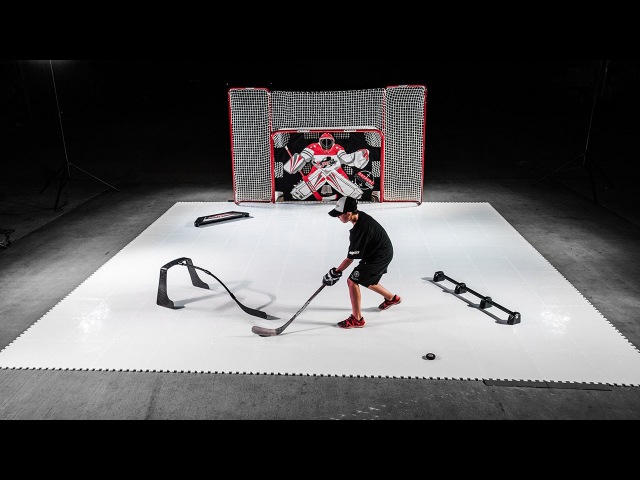
| BAUER VAPOR | BAUER NEXUS | BAUER SUPREME |
| CCM RIBCORE | CCM RBZ SUPERFAST | CCM TACKS |
| WARRIOR QR | WARRIOR DYNASTY | |
| SHERWOOD REKKER | SHERWOOD TRUE TOUCH | |
| EASTON V | EASTON SYNERGY | |
| STX STALLION | STX SURGEON | |
| TRUE |
Blade Pattern by Bauer
The name of the blade pattern in comparison the other brands
| BAUER | CCM | EASTON | WARRIOR | SHERWOOD | Blade-Profile |
|---|---|---|---|---|---|
| PM9 | P45, P42 | E/P4, E/P9 | W01 | PP09, PP96, Forstberg | |
| P88 | P40 | E36 | W88, W08 | PP77 | |
| P92 | P19, P87A | E/P3 | W03 | PP26, Sakic | |
| P28 | E28 | W11, W28, W10 | |||
| P91A | P15 | E/P6 | W05 | PP88, PP20, Drury | |
| P14 | P46 | W14 | PP01 | ||
| P02 | P38 | E/P5 | W12, W02 | Lidström | |
| P106 | P7 |
Hockey and ice skates
Please measure (shoe) sizes as the usual Euro sizes, that you will find in brackets behind the US/UK/POINT sizes. If the skates nonetheless do not fit you can of course make use of your 14 days conversion rights.
If the skates nonetheless do not fit you can of course make use of your 14 days conversion rights.
Sizes:
- D/R: normal
- E: large
- 2E: extra large
Undergarments
The undergarments sizes depend on the hips. Anyone who always needs something bigger pants at street wear should also resort to a higher size. In terms of brands, the customs (“) sizes may vary slightly. This is then recorded in the respective undergarments.
If you already know how much inches is to your hips, you can type the words on the form and you will get your size. Do not know your hip? No problem. Simply use a tape measure to measure the point marked on the form and enter the cm. You will then be automatically issued your size.
| Hip inch | Height | Size | |
|---|---|---|---|
| 20-22″ | up to 99 cm | → | Bambini S |
| 21-23″ | 100-109 cm | → | Bambini M |
| 21-23″ | 110-119 cm | → | Bambini L |
| 22-24″ | 120-130 cm | → | Junior S |
| 24-26″ | 130-140 cm | → | Junior M |
| 26-28″ | 140-150 cm | → | Junior L |
| 28-30″ | 150-160 cm | → | Junior XL |
| 30-34″ | 150-160 cm | → | Senior S |
| 32-36″ | 160-170 cm | → | Senior M |
| 34-38″ | 170-180 cm | → | Senior L |
| 36-40″ | 180-190 cm | → | Senior XL |
| 40+” | 190 cm and up | → | Senior XXL |
Goalie Chest pads
Please measure the chest circumference with a tape measure (see picture). Enter the value into the form field and it will gives out the right size. Alternatively, you can match the value with the table. Please note your body height for the chest pads.
Enter the value into the form field and it will gives out the right size. Alternatively, you can match the value with the table. Please note your body height for the chest pads.
| Chest circumference | Height | Size | |
|---|---|---|---|
| 50-56 cm | up to 117 cm | → | Bambini S/M |
| 50-56 cm | 117-124 cm | → | Bambini L/XL |
| 51-56 cm | 114-122 cm | → | Junior XS |
| 56-61 cm | 122-131 cm | → | Junior S |
| 61-71 cm | 131-141 cm | → | Junior M |
| 71-76 cm | 141-150 cm | → | Junior L |
| 141-150 cm | → | Intermed S | |
| 66-71 cm | 150-155 cm | → | Intermed M |
| 71-76 cm | 155-160 cm | → | Intermed L |
| 76-81 cm | 160-166 cm | → | Intermed XL |
| 81-86,5 cm | 160-166 cm | → | Senior S |
| 86,5-96,5 cm | 166-177 cm | → | Senior M |
| 101,5-106,5 cm | 177-184 cm | → | Senior L |
| 106,5-112 cm | 184-196 cm | → | Senior XL |
Goalie Catcher
To figure out the right size for the catching hands, you need to measure the length from the tip of your middle finger to the bottom of the hand. The cm coming out here, fill in the form or match it with the table. There is a size named Intermed. This is used when Junior is too small and Senior is too large.
The cm coming out here, fill in the form or match it with the table. There is a size named Intermed. This is used when Junior is too small and Senior is too large.
| Hand length | Size | |
|---|---|---|
| 11,9-14,3 cm | → | Bambini |
| 14,4-16,0 cm | → | Junior |
| 16,1-17,8 cm | → | Intermed |
| 17,9-21,3 cm | → | Senior |
Goalie pants
The sizes of goalie pants are based on the hips and body size. To find out the size, type your hips in cm or inches into the form. Match your size again with the table and recognize your body height.
| Hip inch | Height | Size | |
|---|---|---|---|
| 20-21″ | up to 99 cm | → | Bambini S/M |
| 21-22″ | 100-109 cm | → | Bambini L/XL |
| 22-24″ | 120-130 cm | → | Junior S |
| 24-26″ | 130-140 cm | → | Junior M |
| 26-28″ | 140-150 cm | → | Junior L |
| 28-30″ | 150-160 cm | → | Junior XL |
| 30-32″ | 150-160 cm | → | Senior S |
| 32-34″ | 160-170 cm | → | Senior M |
| 34-37″ | 170-180 cm | → | Senior L |
| 37-40″ | 180-190 cm | → | Senior XL |
| 40-44″ | 190 cm and up | → | Senior XXL |
Goalie masks
The size of the mask is determined by the head circumference. If you do not know the size, simply enter your head circumference in centimeters in our generator. To measure, use a measuring tape that you put around your head.
If you do not know the size, simply enter your head circumference in centimeters in our generator. To measure, use a measuring tape that you put around your head.
| Head circumference | Size | |
|---|---|---|
| 48,3-53 cm | → | Bambini |
| 53-57 cm | → | Junior |
| 56-59,5 cm | → | Senior |
Goalie leg pads
It is important to measure correctly. Place the tape measure at the center of your knee and listen to them on the floor. You measure from the knee to the bottom of your foot. You get the best results when sitting. If you have found the cm indication, you can enter the value in the form to figure out which choice you have to make when ordering. The input can be made in cm or in inches. There is a size named Intermed. This is used when Junior is too small and Senior is too large.
| Shin length cm | Shin length inch | Height | Size | |
|---|---|---|---|---|
| 29-32 cm | 11,5-12,5″ | up to 122 cm | → | Bambini 20 |
| 32-34 cm | 12,5-13,5″ | 122-127 cm | → | Bambini 22 |
| 34-37 cm | 13,5-14,5″ | 127-132 cm | → | Bambini 24 |
| 35,5-38 cm | 14-15″ | 132-137 cm | → | Junior 24+1 |
| 38-41 cm | 15-16″ | 137-147 cm | → | Junior 26+1 |
| 41-43 cm | 16-17″ | 147-157 cm | → | Junior 28+1 |
| 43-47 cm | 17-18,5″ | 157-168 cm | → | Intermed 30+1 |
47-49. 5 cm 5 cm | 18,5-19,5″ | 168-173 cm | → | Intermed 32+1 |
| 48-51 cm | 19-20″ | 173-180 cm | → | Senior 32+1,5 |
| 51-53,5 cm | 20-21″ | 180-188 cm | → | Senior 34+1,5 |
| 53,5-56cm | 21-22″ | 188 cm and up | → | Senior 36+1,5 |
How to Size a Hockey Shoulder Pad
Use a soft measuring tape and measure the circumference of the chest roughly 1” below the armpit. Cross-reference this measurement with your height in the general sizing chart below or on the specific product page.
Personal preference may come into consideration in case there is an overlap between two shoulder pad sizes. For more coverage, go with the larger size. Choose the smaller size for a lower-profile fit and better responsiveness.
Put on your selected shoulder pads and Velcro up the torso and bicep straps. If you have elbow pads and hockey pants, it’s a good idea to have these on too when fitting.
The shoulder caps should be square on top of the shoulders and the bottom of the torso protection should meet with the top of the hockey pants. The bicep protection should seal any gap between the elbow pads.
If the shoulder pads are too big, the shoulder caps will hang below the shoulder and not provide appropriate protection. The rest of the protection will overlap with the elbow pads and hockey pants, thus inhibiting your range of motion.
If they are too small, there will be exposed gaps in protection between the elbow pads and hockey pants. The shoulder caps will be resting too high up on the shoulders which disrupts the protection and may even cause the shoulder pad to put unnecessary pressure into the neck.
The information below is a general sizing guideline and DOES NOT guarantee fit. The chart is not specific to any item or brand so if a product does have specific sizing guidelines on the product page, DO NOT reference the general sizing guidelines below.
| Pad Size | Height | Chest |
|---|---|---|
| Youth SM | 3’2″ – 3’11” | 20″ – 23″ |
| Youth MD | 3’6″ – 3’11” | 22″ – 25″ |
| Youth LG | 3’10” – 4’4″ | 24″ – 27″ |
| Junior SM | 4’4″ – 4’7″ | 26″ – 29″ |
| Junior MD | 4’5″ – 4’11” | 28″ – 31″ |
| Junior LG | 4’10” – 5’3″ | 30″ – 34″ |
| Senior SM | 5’4″ – 5’8″ | 32″ – 38″ |
| Senior MD | 5’6″ – 5’11” | 36″ – 41″ |
| Senior LG | 5’9″ – 6’2″ | 39″ – 43″ |
| Senior XL | 5’11″+ | 41″+ |
Now that you have found out what size you should wear, check out our quick buying guide below that will help you figure out what level of play and what shoulder pad fit profile best suits your needs!
90,000 How to choose the right hockey equipment for your child? We select together!
If you have firmly decided that your child will go in for hockey, then it is time to correctly choose the appropriate form and accessories.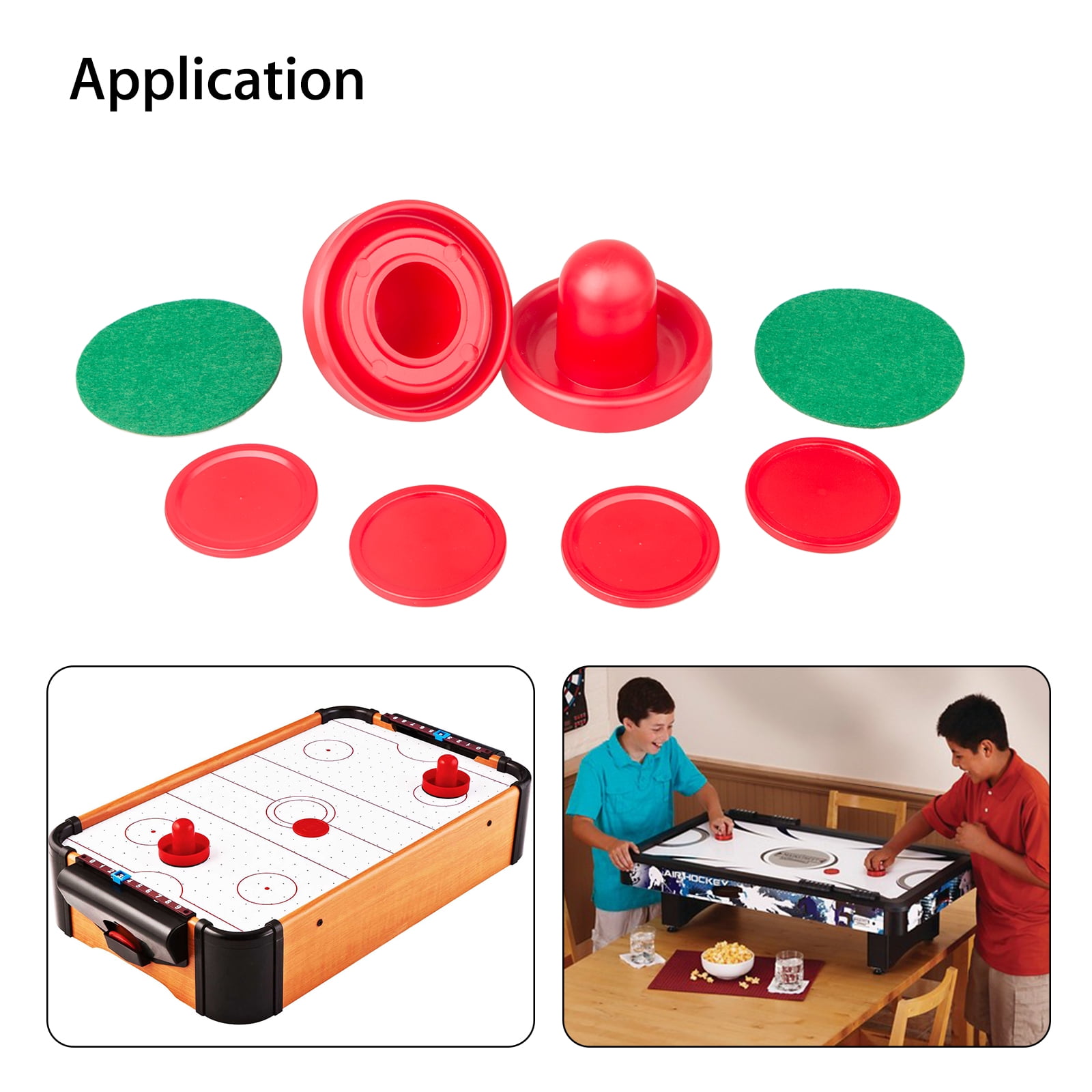 The seemingly difficult choice of hockey equipment in this impressive “variety”, especially if you yourself were not fond of hockey, is not so scary. Even if, after reading the articles, you do not have a clear idea of what is best for your child, sales assistants and a coach who supervises your aspiring athlete will come to the rescue.
The seemingly difficult choice of hockey equipment in this impressive “variety”, especially if you yourself were not fond of hockey, is not so scary. Even if, after reading the articles, you do not have a clear idea of what is best for your child, sales assistants and a coach who supervises your aspiring athlete will come to the rescue.
Why is it important to know how to choose a hockey uniform ? Confidence in the right choice will give, first of all, familiarization with the assortment of goods in a sports store. In addition to the main ammunition, there is also an auxiliary one, which is by no means in last place, the neglect of which can result in significant injuries for your child. For athletes of all levels, there are also additional accessories that give him confidence in any game.
Let’s summarize.The outfit is a reliable protector for a hockey player, even a beginner. Let’s try to figure it out together, how to choose hockey equipment .
Choice of helmet
Completeness of equipment is unattainable without a hockey helmet (helmet). The latter will soften the blows of the head on the puck and sticks, on the support of the goal and barriers. A helmet is the number one product in protective ammunition.
How to choose a hockey helmet? Ideally, the helmet neither slips nor pinches the athlete’s head.The leading edge of the helmet is raised above the eyebrows by 1.5-2.5 cm.
The outline of the head must fit the inside dimensions of the helmet. Its design is adjustable only in length, i.e. in the occipital and frontal areas. But a wider and more spherical head is not included in such a helmet. The result is significant pressure on the whiskey. Already in the first minute of the game, the hockey player feels discomfort that prevents him from playing normally. Despite the improvement in sizing, the helmet is still only adjustable in length and not in width.It is selected in width, that is, it does not slide off the temples.
Among the different models of children’s helmets, you should choose the products of the following brands:
- Reebok – mostly wide helmets;
- CCM – both round and elongated (oval) are available, but the former must be tried on;
- Bauer – helmets of different shapes that you need to try on before buying.
With an oval head shape, give preference to the following companies:
- CCM – round predominate, less oval;
- Bauer – both in equal assortment (according to the number of models), you need to try on before purchasing.
The safest approach is to try on several helmets and choose the most comfortable one for the future player.
Fixing screws
Each helmet is provided with fixing screws. If the fastening is loose, tighten the screws with a screwdriver. Loose and lost screws can be purchased separately. In the absence of at least one screw, the helmet will slide sideways or fly off the head from sudden movements – this is dangerous for a child, since it is not completely serviceable and the work helmet will not provide him with adequate safety.
Shell
The bib (carapace) protects the shoulders, chest and vertebrae from blows. Its fixation is performed from the lateral ends of the chest, as well as on the forearms. Normally, the protective layer on the shoulder of the carapace reaches the elbow piece. The back protector extends to the top of the shorts. When selecting the Hockey Bib , pay attention to the distance from the carapace to the shorts / elbow pads without protection. This is the only way to ensure that your child is protected while playing.
Shorts Selection
Hockey pants or shorts contain protective elements for the thighs, coccyx and kidney area.The length of the shorts is a fundamental characteristic: the shields should be overlapped by the shorts. But with the width of the shorts, slightly larger than the waist, they are tied up tighter, or suspenders are used.
Elbow pads
At the time of the fall, the elbow pads protect the elbows from damage. In fact, the elbow pad covers the area between the glove and the shell. An overlap with a cuff is obtained on the bottom side.
In fact, the elbow pad covers the area between the glove and the shell. An overlap with a cuff is obtained on the bottom side.
Guards
They protect the shins and kneecap from injury, blows with washers, wounds accidentally inflicted by the tips of skates and other things.To understand how to choose hockey shin guards, you need to figure out how they should be properly fixed on your leg.
Scutes, as a rule, equally wide along the entire height, or narrowed at the bottom. The bottom of the wide flap covers the upper on the boot – this option is considered to be improved protection compared to the tapered flap. For tapered garments, the tongues of the skates extend outward, covering the shin guards and pants at the top. Which accessory to give preference to – wide or narrower – is a matter of hockey player’s taste.
Hockey Gloves
This is a means of protecting hands as such: they protect the wrist, hand, fingers. How to determine the size of hockey leggings? It is determined by the length of the product (like any gloves). They fit tightly on the arm, the cuff goes over the elbow pad. Ideally, hand movements are not hindered, club control is preserved. The palm of the product is made of soft and durable materials.
They fit tightly on the arm, the cuff goes over the elbow pad. Ideally, hand movements are not hindered, club control is preserved. The palm of the product is made of soft and durable materials.
Skates
The main indicator of skates is their size and comfort.Only by choosing a comfortable model, the hockey player will be able to confidently keep on the ice. How to choose the right size hockey skates? After putting on the skate correctly, it does not press on the heel, and the skate itself will not fall off the foot.
In a sitting position, place the skate on the floor and quickly push the heel back, it should rest against the heel. Lace up your skates and stand. As with casual shoes, your toes should be level with the toe of the shoe, but not pinched.
Perform a repulsive maneuver, as when trying to move on ice.The toes should “let go” from the inside of the toe of the shoe. If the shoe “walks” on the foot (the size is too large) or the toes are too squeezed in the toe, change the size you are trying on to the correct one.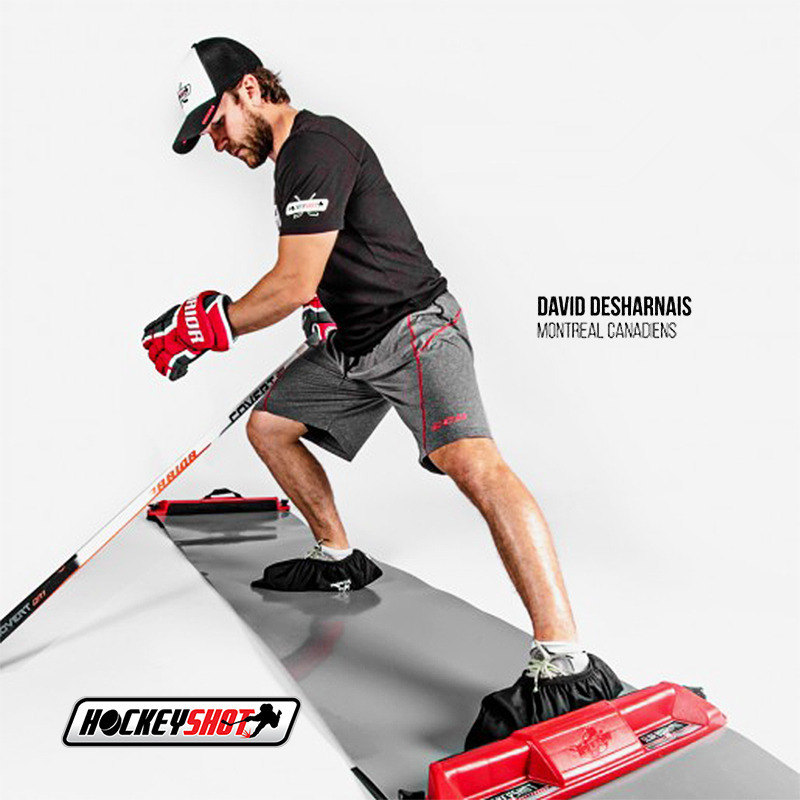 Skates for teenagers and young men are taken by half a size, a little for growth. 0.5 units is the thickness of the toe between the heel and the size of the shoe, which matches the size of the foot itself. Put your fingers on the toe of the shoe and check if the index finger of your hand enters the space between the heel and heel.
Skates for teenagers and young men are taken by half a size, a little for growth. 0.5 units is the thickness of the toe between the heel and the size of the shoe, which matches the size of the foot itself. Put your fingers on the toe of the shoe and check if the index finger of your hand enters the space between the heel and heel.
Skates for growth will also come in handy when, physiologically, a child has one foot slightly larger than the other (by the same 0.5 units – there are such people as well).For the most comfortable shrinkage of the foot in the boot, do not pull the laces so that it itself pinches the foot somewhere in one place – the compression of the foot by the laced boot is usually evenly along the entire length of the foot. On properly laced skates, the lace rings are at least 3 cm apart.
Skates will last longer if:
- You will not use them on stone, metal or hardwood floors.
- Blades will be sharpened before each match.
Stick
Unlike a hockey uniform, the stick will not protect the player.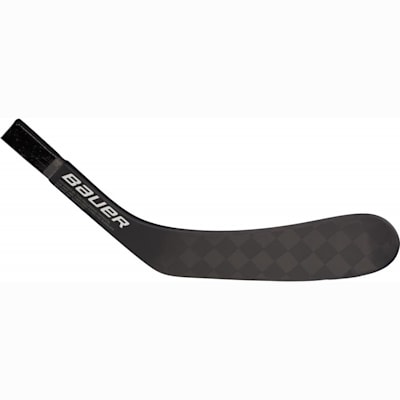 Its purpose is to guide the puck along the required trajectory at the moment in order to ensure its transfer to another hockey player or hitting the goal of the opposing team.
Its purpose is to guide the puck along the required trajectory at the moment in order to ensure its transfer to another hockey player or hitting the goal of the opposing team.
Let’s find out how to choose a hockey stick . Children’s models are divided into 3 classes: YTH, JR, INT. Any of the classes has its own stiffness indicators, as well as length. Flex (a measure of stiffness) determines how stiff or flexible it is.A higher value of this indicator means a harder club. Each firm has its own Flex value range, but the most popular is the Easton value system:
- YTH (40) – for children of the younger group. A stiffness of 40 units and a length of 117 cm is an ideal choice for beginners.
- JR (50) – degree of hardness – 50 at 130 cm. These are clubs for children from 8 years old to 12.
- INT (60, 65) – hardness 60 units, with a length of 147 cm.
- Flex 60 – for teenagers over 12 years old for whom the JR 50 is small.
 Compared to the latter, the Flex 60 has a much more curved end for better control of the movement of the washer.
Compared to the latter, the Flex 60 has a much more curved end for better control of the movement of the washer. - Flex 65 is the final transition category for teenagers under 14 who have not yet mastered the standard adult golf club. The folded end of the Flex 65 is also lengthened.
The
How to choose the right club length?
An upright stick should reach the athlete’s nose (excluding skates), and if he is wearing skates – up to the chin.This “old-fashioned” way speeds up the selection of a club, even when you are not versed in the marking of standards.
If you cannot find a model of the required length, buy a longer one and cut it off. Important! Shortening will increase the stiffness of the stick.
Protective masks
Hockey Helmet is not all. The kit includes a mask (Combo package). It helps to protect the face well. The size of the mask is standardized separately and may not correspond to the size grid of the helmet.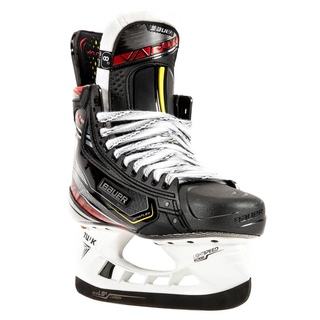
Important! According to the standards approved by the Russian Ice Hockey Federation (abbreviated as FHK), players under 18 years of age must wear throat protectors and face shields. Hockey players over the age of 18 can wear a visor instead of a mask, while throat protection is not required.
Bandage
The shell protects the groin area from damage. Usually the bandage coincides in shape with the outer contours of the groin and looks like a special shell. The bandage also includes a pocket for a shell of protection, a wide stretch belt, two belts.Leggings are fixed with a separate, built-in protection belt. Some manufacturing companies distribute underwear with a shell of protection and fasteners.
Neck protection
It should fit snugly around it, but not pinch it.
The aforementioned safety rule for underage hockey players requires covering not only the throat, but also the entire neck.
Underwear
As it is usually used a jumpsuit equipped with a front zipper. Alternative – leotards or shorts, a T-shirt with long or short sleeves.It can be loose cut or fits the body. Sometimes it is supplemented with an internal protective shell, as well as fixing gaiters, which eliminates the need to purchase a protective bandage and additional belts.
Alternative – leotards or shorts, a T-shirt with long or short sleeves.It can be loose cut or fits the body. Sometimes it is supplemented with an internal protective shell, as well as fixing gaiters, which eliminates the need to purchase a protective bandage and additional belts.
Additional built-in protectors increase the level of protection in some underwear sets. It is important to choose a hockey uniform in size , especially underwear. The anti-slip components of the Grip prevent the equipment from twisting around the player’s body during the match – twisting the ammunition would hinder his movement.
Classic linen is made from cotton fabric. A more modern option is high-quality synthetics that facilitate the evaporation of sweat without absorbing, which can increase the weight of the laundry. The antibacterial layer of synthetic underwear prevents the smell of sweat, and the fabric itself prevents overheating. The choice of lingerie is a matter of taste.
Socks
They should hug the legs, and not dangle: excess friction is the cause of calluses.
Leggings
They are pulled over the shields.It is recommended to dry them after the match and wash them periodically in cool water.
T-shirt
It must be large – it is put on over the ammunition. The shirt should cover the elbow pads, bib, top strip of the shorts. By its color, you can determine which team the player will play for, and the numbering of the participant is indicated on the back side. Hockey players use three jerseys: training jerseys, as well as jerseys for away matches and home.
We have already understood how to choose hockey equipment, now let’s move on to choosing a bag for transporting and storing it.
Hockey Backpacks and Bags
Bags for young hockey players are divided into different categories.
Equipment bag
There are also carrying bags with wheels.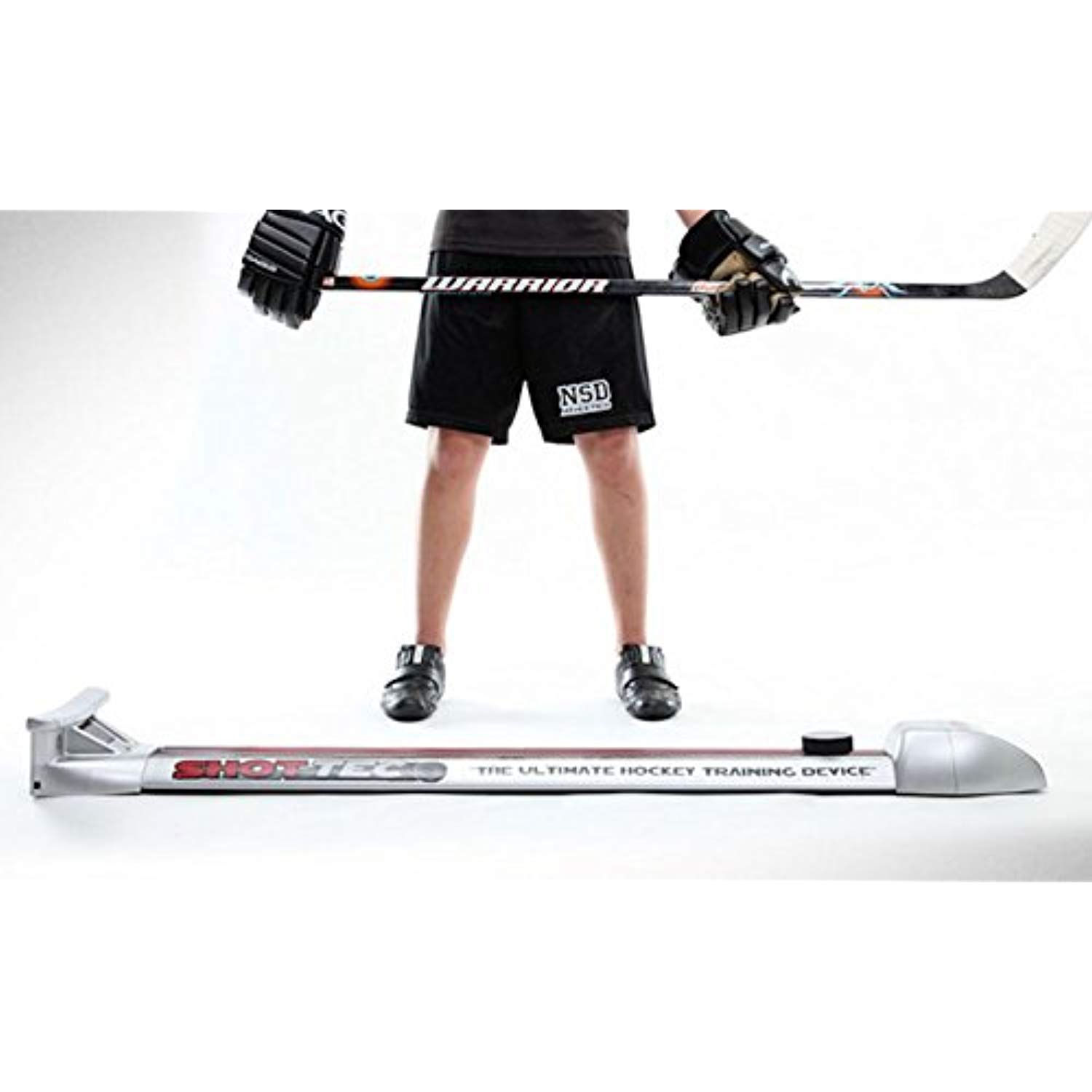
These bags for children can hold all the equipment except for the hockey stick. They have two compartments: the main compartment for all accessories and the small compartment for the skates. The size is mainly determined by the length – from 66 to 91 cm. The width is 36 – 41 cm. The height is from 31 to 41 cm…. This is the volume of compactly folded equipment that fits in a bag.
Wheels make it easier for a child to carry equipment, since it is difficult for a child to carry all hockey accessories. The wheelbags are equipped with a retractable handle. Some types of bags can be with or without wheels.
Hockey backpack with and without wheels
A backpack is much more convenient than a bag – the load of the carried equipment lies exactly on the spine, and does not dangle in one of the hands, forcing it to bend. Similar to the hockey bag, the backpack has skate pockets and a main compartment for the rest of your gear.A backpack, like a bag, is sometimes equipped with wheels.
Separate golf club bag
The purpose of the club bag is to protect the club from damage. Children use 132 cm bags – it can hold 2 or 4 pieces.
Skate bag
For example, if you only need to sharpen your skates, the Mini Skate Bag replaces your standard bag or backpack. It will also help protect them from damage.
Helmet bag
It will be a reliable protection against chips and scratches.
Washer bag
A significant number of them will fit in it – from 30 to 120 pieces. Handles contribute to comfortable carrying.
How to put on a hockey uniform for a child correctly
Hits 1.7k. Updated
What is the correct order to put on your hockey uniform? This question is asked by every parent who has given a small child to hockey. At the age of 6-7 years, children still do not know how to put on equipment on their own, and this task falls on the shoulders of adults.
Field Player Equipment
Hockey equipment is worn in a specific order. This allows the child to remember the sequence. And soon the young hockey player will be able to cope without the help of an adult. First, the child must be stripped down to his panties and put on things in the following order:
- Thermal underwear or jumpsuit.
- Sports socks.
- Protective groin shell.
- Shin protector.Shin guards for the right and left shins are different, it is important not to mix them up.
- Leggings or gaiters.
- Hockey shorts (underpants).
- Skates. They should be worn in advance. Otherwise, the child in the outfit will not be able to bend and tie the laces on their own. The tongue is left out or under the flap (depending on the preference of the athlete).
- Hockey bib (or carapace).
- Elbow pads.
- Neck protector. A must for all field players under 19 years of age.
- Sweater with the number and surname of the hockey player. The player’s number is indicated on the back and sleeves, the surname is on the back. The sweater should not be large and wide, and should not fall below the panties.
- Helmet.
- Leggings (gloves).
The hockey player is ready for training. At first, it may seem that everything is complicated, but usually for the fifth time, parents already understand in what order to put on the equipment correctly.
Useful articles on choosing and caring for hockey equipment:
Goalkeeper equipment
A hockey goalkeeper’s outfit must provide the athlete with good protection against blows from the puck and sticks of opponents, at the same time not hinder his movement when catching the puck.
The “Rules of the sport of hockey” stipulate that protective equipment, with the exception of gloves, masks, skates and goalkeeper shields, must be completely hidden under the uniform. The skates and gloves of the goalkeeper may differ in color and design from the skates and gloves of the players on the team. The equipment is adjusted to the figure of a young hockey player. Shin guards, knee pads, bib must correspond to the size of the goalkeeper.
The outfit is put on in the following order:
- Thermal underwear, jumpsuit or underwear with special protection for the collarbone, forearm, ribs, elbows, knees and hips.
- Sports socks. Cotton can be worn downwards, and thin woolen ones can be worn on top.
- Goalkeeper groin guard (shell, shell). It is larger than a fielder’s shell.
- Thin woolen leg warmers above the knee.
- Knee pads. Fixed on the leg with Velcro straps.
- Goalkeeper Hockey Shorts. They differ in the number of protection elements and a loose fit.
- Goalkeeper skates.
- Goalkeeper pads.
- Neck protector. A must for all goalkeepers under 19.
- Goalkeeper’s bib (or carapace).
- Sweater with number. The sleeves should not hang below the fingers of the gloves.
- Goalkeeper helmet with mask.
- Goalkeeper Gloves: Pancake and Trap for catching the puck and protecting against impacts.
In individual cases, the algorithm for donning equipment can be changed, here it is not the sequence itself that is important, but the reliable fixation of all elements.Usually, by the age of 8, the child is able to put on the uniform on his own.
Kit Maintenance
Hockey equipment must be kept clean. To do this, simple rules are followed:
- underwear (thermal underwear, knitted overalls, socks), wash and dry after each game and training;
- Dry and ventilate equipment after each training session;
- Wash the equipment as it gets dirty;
- After each skating and before putting on the covers, it is necessary to wipe the blade of the skates dry to protect it from corrosion;
- Before each game, check the sharpening of the blade;
- Clean and dry the helmet after each training session;
- Gloves should be lubricated with oil inside and outside once a month, then dry.
You will find more useful articles about hockey in the sections:
What equipment is needed to play hockey
Hockey is one of the most popular and emotional sports in Russia. Often, fans of the game, in addition to watching professional matches, themselves join this sport, while trying to buy themselves good equipment. What does the hockey equipment of a hockey player consist of?..
Hockey is considered one of the most traumatic sports, and authorization to use forceful techniques only increases the risk of serious injury with serious consequences. To make the game enjoyable, you need to choose the right equipment. Even if you are just a beginner hockey player, you are still advised to get high-quality hockey uniforms right away. Quality hockey gear can help you reduce the chances of injury, provided that all necessary body parts are protected.Some novice hockey players seek to save money and neglect some of the hockey equipment, which is unacceptable for this sport.
Hockey equipment is produced in three types – amateur, semi-professional and professional. Amateur grade ammunition is relatively inexpensive, but its service life is shorter. Semi-professional hockey equipment is designed for higher loads and can last you much longer. Professional grade protection – top quality sports equipment.
A player’s ice hockey equipment must include:
1. Thermal underwear . Tightly fitting to the body, hockey thermal underwear will definitely not freeze either on an indoor skating rink with artificial ice, or in the open air, even in severe frost.
2. Groin protection (also a shell, shell or bandage) – an obligatory element of a hockey player’s protection. It is a specially shaped plastic sink. Designed to protect the groin area (mainly genitals) from various injuries.Depending on the design, it is fixed with special straps or built into special underpants worn under protective shorts.
3. Shields (knee pads) . Even in amateur hockey, where the puck rarely rises above the knee, strong shin and knee protection will be required. The risk of hitting the leg with a club or puck is very significant. Hockey pads are designed to protect the shins and knees during falls, from cuts from the blades of skates, from blows from a club or puck. Knee pads are different for players depending on their role in the team.For example, a defender’s shin guards have to withstand more loads than a striker’s shin guards. Shields must be articulated. Better if knee pads with enhanced calf protection and additional protection of the popliteal fossa.
4. Leggings (leggings) are put on directly on the shields, which increases their protective properties. Prevent the hypothermia of the hockey player. The dense fabric protects against impacts, insures against cuts and improves overall comfort.
5. Briefs (shorts) protect the hips, tailbone and lower back.Made of high-strength artificial fabric, with rigid inserts on the hips, tailbone, lower back and spine.
6. Skates . The main difference between ice hockey skates and skates for skating is a firm promontory that can withstand a puck or stick hit and a tighter tongue. Nylon and plastic are used for the production of the skate boot. When choosing skates for yourself, you need to make sure that they sit comfortably on your foot and are not heavy. Inside the skate there should be inserts of thermoforming material, which will allow the boot to sit tightly on the foot.The seamless inner lining will increase the comfort and durability of the skate and also reduce perspiration. The outer sole of the skate should be made of carbon fiber, so it will be stiff when turning.
7. Shoulder pad (carapace, bib, “shoulders”) protects the chest, shoulders and spine during falls, from blows with a hockey stick or puck, from cuts by the blades of skates. The carapace set consists of padded shoulder pads, front and back protectors.You need to choose a shell that is light. The bib should be made of breathable materials that wick moisture away and thus provide comfort while playing. Bibs differ for players based on their role in the team. For example, the defender needs the most durable carapace that provides the highest degree of protection. At the same time, he must ensure the freedom of movement of the hockey player.
8. Elbow pads are designed to protect the player’s hands during falls, from cuts by the blades of skates, from blows with a club or puck.Elbow pads should fit well, bend and unbend. They can consist of several parts. The most important component is the elbow hinge; for maximum protection, it is better to choose a cup with outer and inner padding.
9. A hockey player’s sweater must be comfortable for the body and not hinder the player’s movements. The hockey player’s clothing must be reliable and durable, as it has to perform its functions in a fairly tense rhythm.
10. Helmet protects the player’s head and face from falls, blows with a club and a puck.Hockey helmets are made of plastic, the inside of the helmet should have a soft lining to cushion impacts. To protect the face, the helmet must be equipped with a plastic visor for the brave or a mesh for those who prefer safety.
11. Gloves (gaiters) to protect the hands of the player. Generally, the construction of gloves is in two parts to provide better elasticity and flexibility. Amateur-level leggings are usually made from textiles, and inside from genuine leather.Professional hockey leggings are made of polyurethane. Like skates, leggings are made of thermoforming material, which fit snugly on the arm.
12. The hockey stick can be either integral or composite. Composite clubs consist of a pipe and a hook, the hook is replaced with a new one if necessary. The stick should reach the chin of the skating player. It is always better to get a longer club (about the size of your own height) – in which case you will then cut it off. It is recommended to wrap the hook with tape, which will prolong the life of the tool.
These are the basic elements of any hockey player’s outfit. Also, in addition to the main parts of the ammunition, additional accessories can be added: a neck protector, a brace for shorts and much more for additional protection and comfort of the player.
The entire list of elements of hockey equipment for players of various levels can be found in our store.
Choosing a hockey stick
Choosing a hockey stick
Preparing your hockey equipment begins with choosing a stick.This is the main element of equipment, which, more than skates and other attributes of a hockey player, reflects a sports personality: the player’s role in the team, his style of play, personal technique. The club is always chosen with an orientation towards these features and takes into account many nuances.
Which material should you choose?
It is better to decide on this issue in advance, since the cost of the club largely depends on the material. This will help you plan an approximate budget for the purchase of equipment.Conventionally, the whole variety of models can be divided into two groups – wood and composite.
Wooden golf clubs – They are heavier and less durable, but also the cheapest. They are usually considered an option for newbies. In addition to its cost advantages, wood transmits vibrations well and gives a better puck feel, which is very important for mastering the intricacies of playing technique.
Composite sticks – this group unites hockey equipment made from modern multicomponent materials – fiberglass, carbon, graphite, kevlar, etc.Composite models are significantly lighter than wooden counterparts, which provides a wide range of advantages for advanced players. Carbon and Kevlar sticks are more durable.
One-piece or multi-piece stick?
The hockey sticks available on the market today are of two types – one-piece and one-piece. The first are monolithic structures in which the stick (shaft) and the hook (feather) are one whole. In case of breakdowns, which are typical situations in professional hockey, most likely, such a stick will not be repairable.
Composite clubs have a spliced construction: the hook and shaft are connected independently using thermoplastic glue. If the hook, which is the most vulnerable part, is broken or worn out, it is easy to replace it with a new one. Assembled sticks allow the athlete to experiment with hooks of the desired shape and material. This is especially important for aspiring hockey players looking for their own individual style of play.
Choose a size
The length of the stick is selected taking into account the height, weight and build of the hockey player.Modern manufacturers offer inventory for 4 age groups, each of which has been assigned a corresponding marking:
1. Baby (yth) – golf clubs for children under the age of 7 years. The length of such models does not exceed 115 cm.
2. Junior (jr) – sticks 120-135 cm long, aimed at hockey players 7-15 years old.
3. Teenage (int) – models 135-145 cm long for hockey players up to 17 years old.
4.Adults (sr) – full-length versions of golf clubs 145-157 cm long. Small adult hockey players often prefer teenage versions.
The exact selection of the size is especially important for children. A long or, conversely, too short a stick will not allow you to properly master the technique of striking and dribbling the puck. The optimal height of the club for a child under 10 years old should be such that, while standing without skates, its upper part reaches the middle of the forehead.
Stick grab
When choosing the first club, the athlete must know what kind of grip he has: left or right.Taking this feature into account, pick up a hook with a bend in one direction or another.
The specificity of the grip is determined by the position of the lower hand. If the athlete is comfortable holding the stick with his right hand at the top and with his left at the bottom, he has a left-hand grip. If the left hand is up and the right hand is down, the grip is right-sided.
It is important to understand that the specificity of the grip does not depend on whether the person is right-handed or left-handed. Everything here is determined solely by the factor of convenience.As the first putter, it is recommended to choose the version with a straight hook, since it is equally convenient for it to play with a left and right grip. So in practice, you will be able to determine the usual position of the hands.
Stick stiffness
The stiffness of the stick should be appropriate for the weight and strength of the player. The more the club bends at the moment of the throw, the more powerful the blow. For stronger and heavier hockey players, hard sticks are optimal. In children and juniors, the stiffness is less, i.e.j. the player must be strong enough to bend the stick and make a good shot. Without the right stiffness, it will be difficult for a hockey player to accurately control the puck while dribbling, passing and shooting.
The stiffness indicator is marked with numbers that approximately correspond to the weight of the hockey player:
· Children’s and junior clubs – from 40 to 50;
· Teenage models – from 50 to 65;
For adult hockey players from 75 to 120.
Changing the length of the club (cutting it or increasing the height due to special inserts) affects the stiffness indicators. Shortening makes it stiffer and lengthening more flexible.
Hook characteristics
Bending angle is a characteristic that determines the angle between the shaft and the plane of the hook. In modern clubs, this parameter ranges from 4 to 8. The lower the number, the greater the angle. The choice of the optimal bending angle is an individual matter and depends on the manner of play.4, 5.5, 5 curved sticks are used by athletes who play predominantly in low incline stances and prefer to lead the puck in front of them. 6, 7 and 8 angled sticks are the choice for those who like to keep the puck on a short distance while maintaining maximum control.
Toe shape . The hook nose profile can be rounded or square. Round toe is preferred by offensive players. It is convenient to pick up the puck with such a stick, lead it with short alternating strikes, perform basic attacking techniques and feints.The square toe stick is comfortable to play at the board, since it can effectively stop the pucks launched along the board. Such models are traditionally preferred by defenders.
Hook length. In accordance with this parameter, modern clubs are divided into three groups:
1. With a long hook (long) – increases the power of the throw, improves control when receiving and passing the puck.
2. With a medium hook (medium) – provides an optimal balance of control and power of blows.
3. With a short hook (short) – guarantees whipping throws, increases control during dribbling.
Hook bend . This important parameter is determined by two points. The first one is the bend area, i.e. the area where the curvature begins. The flex zone can be closer to the heel (easier to lift the puck), offset to the toe (better puck control), or positioned in the middle of the hook. In terms of its depth, the bend of the club feather can be light, medium and deep.
Types of coatings
The outer finish of the stick has two functions: protective and anti-slip.
As the first type of coating, most manufacturers use epoxy-based formulations. It protects the shaft from the formation of microcracks, chips and other mechanical damage, thereby extending the service life of the hockey equipment.
An important characteristic of the club is the presence or absence of an anti-slip coating on the shaft.Based on this feature, there are several types of clubs.
Grip – models with an anti-slip coating that provides the most reliable grip of the shaft during play without slipping hands and twisting the shaft. All of this minimizes the loss of energy when performing powerful punches and passes.
Clear is a category of non-slip sticks. A player who prefers such models loses some of the rigidity of fixation.But thanks to the free sliding of the lower hand along the shaft, he can change its position and react to game situations in a split second. In addition, free movement of the hand on the shaft is an important condition for dribbling.
Matte is a type of matte finish in which the developers tried to combine the advantages of the two previous options. The trim allows the hand to slide over the shaft, but the glide itself remains well controlled.
Finding your own club that is ideal for your individual playing style is far from straightforward.But with our advice, you can do it much faster.
90,000 equipment, hockey rinks, ice hockey rinks
FIBERGLASS 7 mm !!!
There is a colossal difference between 5 mm and 7 mm thick sides.
7mm bead is almost 1.5 times heavier, has exceptional resilience to washer hitting. As part of the board, there are additionally 2 layers of glass mat, the noise level from the impact of the washer is 2 times lower.Many people do not fully know about this fundamental advantage and only learn about it during operation. No wonder the technical requirements of the Olympic Committee for professional boards are at least 10 mm thick.
The classic game is a competition, the main component of which is a confrontation between two teams, whose players, passing the puck with their clubs, try to throw it the maximum number of times into the opponent’s goal and not allow it into their own. During the game, six players (goalkeeper and 5 field players) come to the hockey courts in special protective equipment.The game lasts 60 minutes – three 20 minute periods interspersed with 15 minute breaks. The number of substitutions of players during a match is not limited. Sports equipment – puck and stick. Hockey equipment must comply with one of the world’s accepted standards . Therefore, when choosing it, one should be guided primarily by the requirements set forth in these standards.
Hockey rink size According to IIHF and NHL rules, the size of the ice arena may vary slightly. The IIHF rules prescribe that the ratio of hockey boards should be approximately 58×30 meters . In official IIHF championships, tolerances for hockey rink data are up to 27 m wide and up to 61 m long. For other competitions, the minimum area is 40 x 20 meters.
According to NHL rules, hockey rinks must be 85 x 200 feet, that is, 25.90 x 60.96 meters . NHL experts believe that smaller dimensions lead to power struggles, random shots on goal, playing at the boards – in an area where there are many hot martial arts and even skirmishes and fights.The corners of the hockey rink must be rounded with an arc of a circle with a radius of 8.5 m to 7 m according to the rules for courts of IIHF standards. According to NHL standards, this figure is 28 feet (i.e. 8.53 m). Hockey boards
The ice arena must be equipped with plastic or wooden shields. The height of hockey boards must be at least 1 m and not more than 1.22 m above the ice surface level . On the front sides of the site, a protective glass must be installed and a safety net on top of it.All this is needed to prevent the puck from flying out of the court and, as a result, traumatizing the audience. In the middle part, the hockey rinks have two doors that open inward, which serve for the players to enter the ice. Two more doors must be located opposite the penalty bench. Hockey field markings At a distance of 3-4 m from the sides, the end lines are drawn with a special compound. At a distance of 17.23 m from the hockey goal line – the blue lines. They divide the site into 3 zones: the central one and two playing zones of the opponents.In the center of the ice hockey field is a solid red line dividing the field in half, with a throw-in point in the middle. On both sides of the goal at a distance of 6 m are marked throw-in points with a throw-in zone with a radius of 4.5 m.
Hockey goal
The design of the goal must comply with the following parameters:
- Width is 1.83 m (6 ft)
- Height is 1.22 m (4 ft)
- Outside diameter of racks – 5 cm
Hockey goals are fixed on pins, holes are drilled for them in the ice .This method allows you to provide a fairly strong fixation of the structure on the surface of the field. But at the same time, the gate can move and the player who collides with it will not be injured. From the center line of the goal with a radius of 1.8 m, their area should be drawn: in Russia, its length is 3.6 m, according to NHL standards – 2.44 m
90,000 Hockey equipment. Types and manufacturers How to choose and a set
In some sports equipment is of great importance. Hockey is one of them.Hockey equipment includes several parts, each of which is important. You need to choose them, observing some rules, especially if you are going to play sports at the professional level.
A hockey player’s equipment consists of several elements, which are conventionally divided into two groups – basic and additional.
Basic hockey equipment
There is nothing to do on the ice without them. The puck flies around the roller with tremendous speed and power.Striking an unprotected area like this could result in serious injury.
Helmet
The main function of this element is to protect the hockey player’s head from injury. Not only can you hit your head when falling on far from soft ice, but also a puck can hit a soft crown.
To prevent this, a helmet is purchased that should be light and durable. The harness straps must be reliable so that the equipment does not fall off the head during active movement.When buying a helmet, fitting is required. If during it you feel discomfort, you need to pay attention to another model.
After purchase, the helmet needs to be adjusted over the head. To do this, put on your gear and slide it over your head. As soon as it assumes a comfortable position for you, you need to tighten the adjusting screws.
Gloves
For hockey, this piece of equipment is called leggings. Their choice is determined by the level of your game and the location of the matches.For yard and amateur hockey, you can opt for inexpensive models. They are lightweight and will reliably protect your hands from non-critical shocks.
For a professional game, you will need high-class leggings, since the power of blows there is not an example higher. Therefore, it is worth paying attention to expensive and high-quality models made of high-tech materials.
When choosing gloves, comfort and the level of protection they can provide are the main criteria.It is worth purchasing products from trusted manufacturers. When trying on, please note that there should be no gap between the edge of the glove and the elbow pad, otherwise the unprotected forearm is at risk of injury.
Inside the gaiters, they should be as comfortable as possible and sit exactly on the arm. Pursuing comfortable conditions i.e. choosing accessories that are too soft, you risk getting broken fingers, since you will have to pay for comfort with reliability.
Bib
This hockey equipment protects the player from being hit by the puck during the game.It has two protectors for protecting the sternum and back, and cups for securing the shoulders.
If you play hockey professionally, then you need to pay attention to bibs that have additional functions to protect the lower back and abdomen.
The main purpose of the bib is the safety of the player, and therefore it must be reliable and durable. They are conventionally divided into two groups: for defenders and forwards. The latter are suitable for lightweight models that retain the speed and maneuverability of the athlete.The first one needs reliable protection.
Skates
This is one of the elements of equipment, without which there is nothing to do on the rink. The choice of skates must be approached especially carefully, because the speed and maneuverability on the ice depend on it.
Skates should be selected according to two criteria – shoe comfort and protection level. To check the first criterion, you need to try on shoes when buying. If you feel discomfort during the fitting, then these accessories will not work for you.It would be desirable to also ride in them, but it is impossible to do this in the store. Therefore, it is enough to at least take a few steps.
You need to try on skates on those socks in which you plan to play. The latter are selected depending on the ambient temperature. Understandably, yard hockey requires warmer equipment.
Hockey skates differ in both the skill level of the player and the frequency of play. If you go in for sports just for fun, then you can stop at affordable amateur skates.Professional players also need skates of the appropriate level.
The first cast steel skates appeared in England and Holland at the end of the 18th century. And the Russian Emperor Peter I, who at that time was in the Netherlands on business, firmly attached them to the sole.
Stick
It is the main tool of the hockey player. The sticks are constantly being improved. Manufacturers use more and more technologically advanced materials to meet the ever-increasing needs of hockey players.
The main selection criterion is the material of manufacture. There are wood and composite accessories. The former are inexpensive, heavy and have a short lifespan, but they still allow good control of the puck.
Composite golf clubs are long lasting, light weight and heavy cost. The washer is also easily controlled by them. It is better to choose them for those who are engaged in hockey professionally, because for playing in the yard a couple of times a month, a stick made of wood is enough for a long time.
Accessories
Basic hockey equipment is sufficient if you are not playing the sport professionally. The speed and power of blows in yard hockey cannot be compared to what happens on professional ice rinks.
- Thermal underwear. It is cold on the rink, even if the game is played indoors, you still need to take care of keeping warm. In addition, thermal underwear for a traumatic game such as hockey must protect the body in the event of a fall. Therefore, hockey pants are made of durable material with inserts that protect the most traumatized places – the tailbone and lower back.The underpants are divided into options for defenders and forwards. Light models are preferable for strikers, while defenders should choose more reliable ones.
- Shields and shell. The former are used to prevent injury to the lower leg, while the latter is used to protect the groin. Special gaiters are put on the shields, which are attached to the shell in the form of stockings. Clothes are made of dense and durable fabric, which is designed not only to protect, but also to warm the athlete. Shields have two parts – a cup and a shield itself.Their task is to protect the knees and shins of the hockey player during the game. There should be no gaps between shin guards, shorts and skates. It’s great if they have side protection. And the rest of the shields are selected solely according to the anatomical features of the player.
- Elbow pads. Since it is not uncommon for players to fall down in hockey, you should protect your elbows. For this, elbow pads are used. During the fall back, wanting to defend himself, a person often puts his elbows behind him.Elbow pads will prevent injury to this part of the body, which can be extremely dangerous. They are usually supplied with a bib. If not, then purchased separately. The main requirement is the perfect match of the two elements to each other.
The best manufacturers
Any hockey equipment must be of high quality, regardless of the player’s skill level. When purchasing equipment, it is better to give preference to well-known brands, the quality of which has already been verified by a huge number of hockey players.
Reebok
This is a well-known company that produces sports equipment and equipment. The company’s products are distinguished by their attractive appearance and simplicity. At the same time, it is produced using modern high technologies and non-standard solutions. The company presents hockey equipment in many versions, and therefore it will not be difficult to choose equipment for yourself.
Warrior
A fairly well-known brand, whose hockey equipment is of high quality, modern design and attractive appearance.The company’s products are recognized all over the world, as they have a high level of reliability and durability.
Bauer
This is the leading manufacturer of hockey equipment. The products are characterized by style, high quality, durability and long service life.
Features of choice
- You need to buy only what is convenient and suitable in size.
- Price, of course, matters, but you shouldn’t skimp on security.
- When buying, everything must be tried on.You should not trust the purchase to a friend – after all, the effectiveness of your game depends on the convenience.
- As skill grows, the need for new equipment will increase, so be prepared to spend on new equipment in a couple of years.
Cheap hockey equipment lasts less. By saving on quality, you, firstly, put your health at risk, and secondly, you will spend more on acquiring a new form.
Related Topics:
Hockey Equipment – Hockey Equipment Review
For some sports areas, equipment is of great importance, for example, hockey equipment deserves attention, which includes several elements and should be selected according to certain rules, especially when it comes to professional equipment.
Hockey player’s equipment
The main parts of the ice hockey outfit include: hockey stick, skates, helmet, gloves and bib. How to choose them correctly will be described later. In addition, hockey equipment includes:
- To prevent the athlete from freezing, it is necessary to wear thermal underwear. Panties should be made of a material that has high strength indicators, with rigid inserts located in the most traumatic places, for example, the lower back and tailbone.
- Shin guards are used to protect the shin, and a shell is needed for manhood. Leggings are put on the shields, which are attached to the belt of the shell, like stockings. The dense fabric of such things will simultaneously protect against impacts and keep you warm.
- Elbow pads are also used to protect the elbows, since when falling backward, a person exposes this part of the body.
It is worth finding out one more point – how to put on hockey equipment correctly, as most hockey players do it in a familiar and logical order.Thermal underwear is put on first, then the sink and knee pads. After that, there are leggings or leggings, and then, shorts and skates. The following hockey equipment parts are worn in this order: neck guard, bib, elbow pads, jersey, helmet and leggings.
Professional hockey skates
Athletes who skate frequently should choose skates that are lightweight but with a good level of protection and comfort. Hockey skates must be comfortable and capable of providing maximum protection against injury.For professional models, expensive composite materials are used. To provide additional comfort, the boots have anatomical tongues with a molded insert, non-slip insoles with antimicrobial impregnation, and also a modern system of fastening and fitting the blade to the glasses.
Hockey equipment is selected according to the size and in the case of skates, they have two boot heights, and the model range differs by half a size. It should be noted that almost all models of professional skates are thermoformed.This parameter means that the boots must first be warmed up in a special oven, which makes them soft and pliable. While still hot, the athlete puts them on and sits for 10-15 minutes. During cooling, the skates completely repeat the shape of the feet.
Professional hockey stick
It is clear that it is impossible to imagine hockey without a stick, but for effective play it is very important to choose it correctly. There are a number of tips on what this ice hockey outfit should look like:
- The stick must be suitable for the athlete’s height and age.This inventory is divided into four age categories. Each brand may have a different size chart.
- This inventory can be composite or wood. For the first option, different materials are used, including fiberglass, graphite, kevlar, titanium, and others. They are durable and lightweight.
- Professional golf clubs can be one-piece or with a removable hook. The hook when connected to the handle must not outweigh.
- The handle of the club must be firm and elastic.For professional models, special zones are allocated on the handle, by clicking on which, you can increase the accuracy and power of the blow.
- Stiffness is determined by the player’s weight, and this parameter directly affects the quality of the shot. In modern models, it is determined by the Easton scale – a number from 40 to 120. The optimal indicator is about the same as the player’s weight.
- The hooks of the clubs differ in the shape and location of the bend, as well as in the plane of the hook curvature. For strikers, the round shape of the toe of the hook is best, and for defenders, the square shape is best.The best option is a square shape with rounded corners. The bend angle is selected individually and is considered ideal when the club will rest on the ice with its entire edge during the game. Experienced players choose hooks with a large curvature of the plane as this helps to raise the puck quickly.
Hockey Helmet
A mandatory attribute of protective equipment is a helmet, which is made of plastic or metal, and it should be chosen individually, focusing on a number of rules.
- The weight of the helmet should not be heavy, so that it does not press on the head and does not fall.
- A hockey helmet with and without a goalkeeper mask for the average player must have a high-quality fastening.
- There must be a gasket inside, the purpose of which is to cushion the force of an impact.
Hockey Gloves
This piece of protection is called a gaiter and is designed to protect the hands and joints of the hands from the puck and club. It is clear that Bauer hockey gloves and other models should not hinder movement and interfere with the game.
- The main selection parameter is the distance between the fingertips and the bottom of the elbow pad (see table).
- Consider the level of protection. It is clear that the more different inserts in gloves, the better they will protect, for example, there are protective plates for fingers, palms and wrist joint.
- Please note that the elbow pad and gloves should not be too close to each other, otherwise movement will be constrained. Please note that there should not be a large gap.
Hockey Bib
This is a mandatory piece of equipment for a field player, which is also called a carapace.Its main task is to protect the back and chest from the blows of opponents. The Bauer Hockey Bib and other standard options are made up of four parts: shoulder pads, front and back protectors. As for professional models, they have side protective elements. According to the degree of load and protection, bibs are distinguished for defenders and attackers. There are a couple of tips for choosing:
- The main parameter is breast volume. In addition, you should take into account height, weight and other dimensions.
- If the bib fits perfectly, there will be no gaps between the elements and between the shoulder pad and bicep guard.
Hockey goalkeeper equipment
The equipment of the person who stands at the gate is different and it includes the following elements:
- Modern goalkeeper masks are made of carbon fiber, but the net is made of steel to protect the puck from impact, but the rods are positioned so as not to obstruct the view. They are lightweight yet durable.
- Goalkeeper hockey equipment includes a stick, which is made of carbon fiber, is light in weight, but very durable. The hook on many models is curved, which makes it easier to pass on horseback and make shots at empty goals.
- The goalkeeper has shields that provide maximum bounce of the puck so that it does not remain in front of the goalkeeper, but flies into the corner of the court.
- In recent years, new models of goalkeeper skates have begun to be produced, which do not have the usual large plastic cup.The difference is externally noticeable only in the shape of the blade.
- Hockey equipment includes a trap and a broker that are needed to catch the puck and their size is clearly regulated.
- The bib and shorts are designed to protect goalkeepers from puck blows. Starting in 2017, rules were introduced that made the shorts narrower so that they did not block all the gates. The chest is protected by a special bib, which is complemented by a “collar”.
Hockey Equipment Review
There are several manufacturers that produce a wide range of equipment.Professional hockey equipment must be of high quality, durable and have good playing qualities. When buying equipment, it is better to choose products of a well-known brand, so as not to worry about quality. In addition, it is worth remembering that for the most comfortable game you need an individual approach, so be sure to try on every detail.
Reebok Hockey Gear
The renowned sports brand offers equipment for field players and goalkeepers, which combines comfort, attractive appearance, simplicity, high technology and non-standard solutions.The Reebok brand produces hockey equipment for both amateurs and professionals. The range of uniforms is wide, so it will be possible to find an option for each athlete. Professional ice hockey equipment includes high quality skates that have excellent speed characteristics.
Warrior Hockey Equipment
The renowned brand offers equipment with a modern design, high quality and excellent aesthetic performance. Warrior hockey equipment is very popular in the world market.Thanks to the rich assortment of products, the athlete can fully prepare himself for the game. The entire range has a high level of reliability and quality that fully complies with existing standards.
Bauer Hockey Equipment
Leading manufacturer of hockey equipment and jersey. The lineup includes a full range of equipment for goalkeepers and casual players. It is worth noting that until 1990, Bauer produced ice hockey skates, and then an additional division was acquired, thereby expanding the product range.The equipment of this brand is stylish, high quality, strong and durable.
Miklin Hockey Gear
The presented manufacturer produces equipment for goalkeepers, and it is considered the most successful in the domestic market. It is worth noting that the brand appeared on the market only in 2001, but it has already earned respect. Miklin has developed unique technologies, thanks to which the goalkeeper’s equipment in hockey is reliable, comfortable and has good playing qualities.
The owner of this brand assures that they offer an individual approach to customers, creating the most comfortable equipment for them. For production, modern materials are used that are brought from America and other countries. In addition, Miklin hockey equipment is made using an artificial substitute for natural leather, which is several times stronger and more durable.
.

 However, advanced players will prefer more mobility on the ankle.
However, advanced players will prefer more mobility on the ankle. Wire cages provide more protection and do not fog up like face shields.
Wire cages provide more protection and do not fog up like face shields.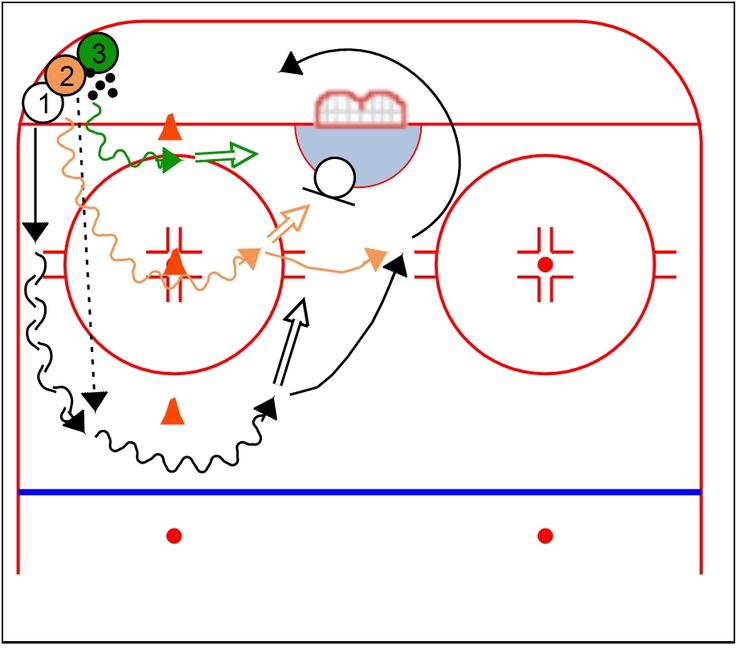
 Compared to the latter, the Flex 60 has a much more curved end for better control of the movement of the washer.
Compared to the latter, the Flex 60 has a much more curved end for better control of the movement of the washer.